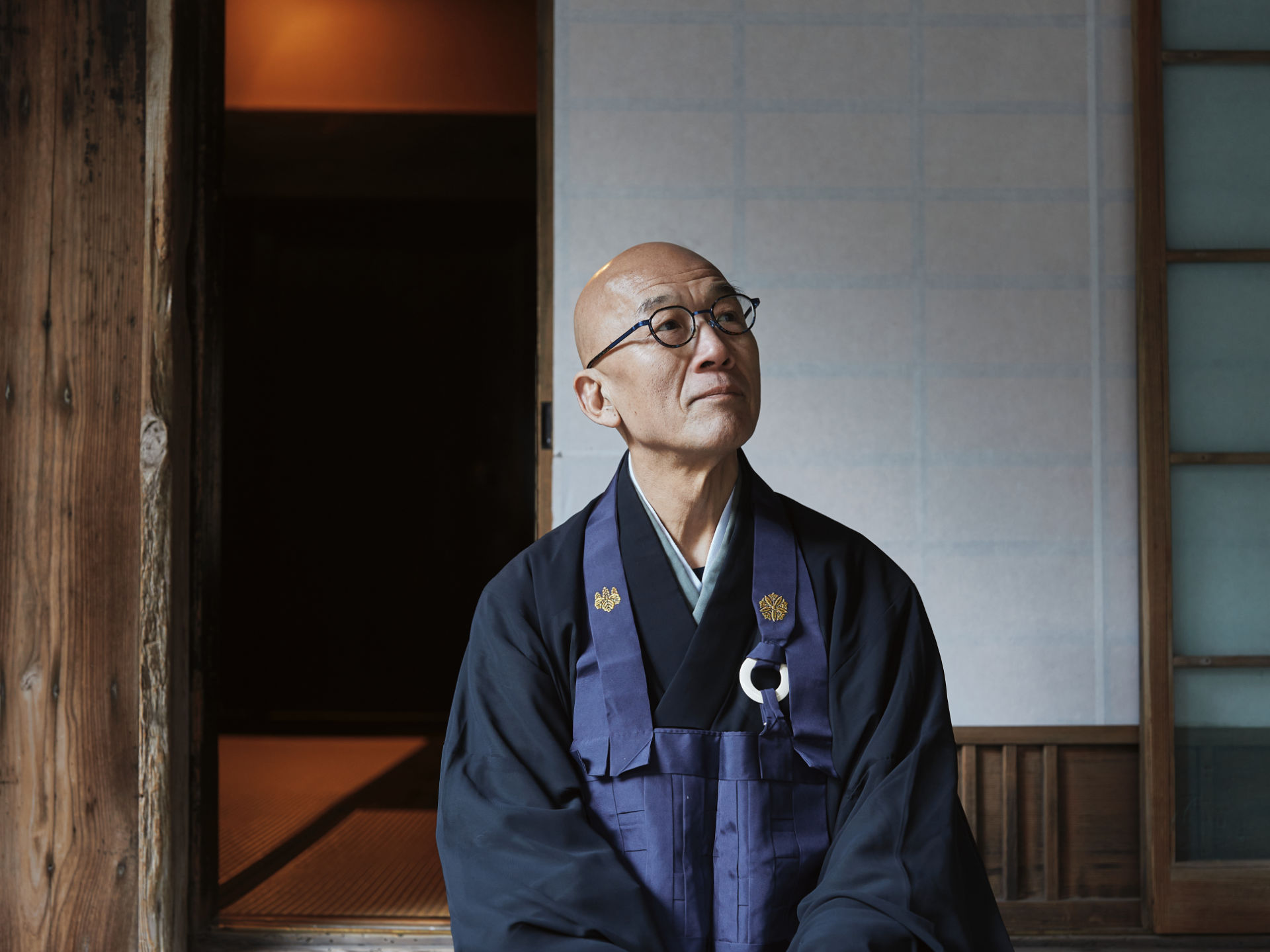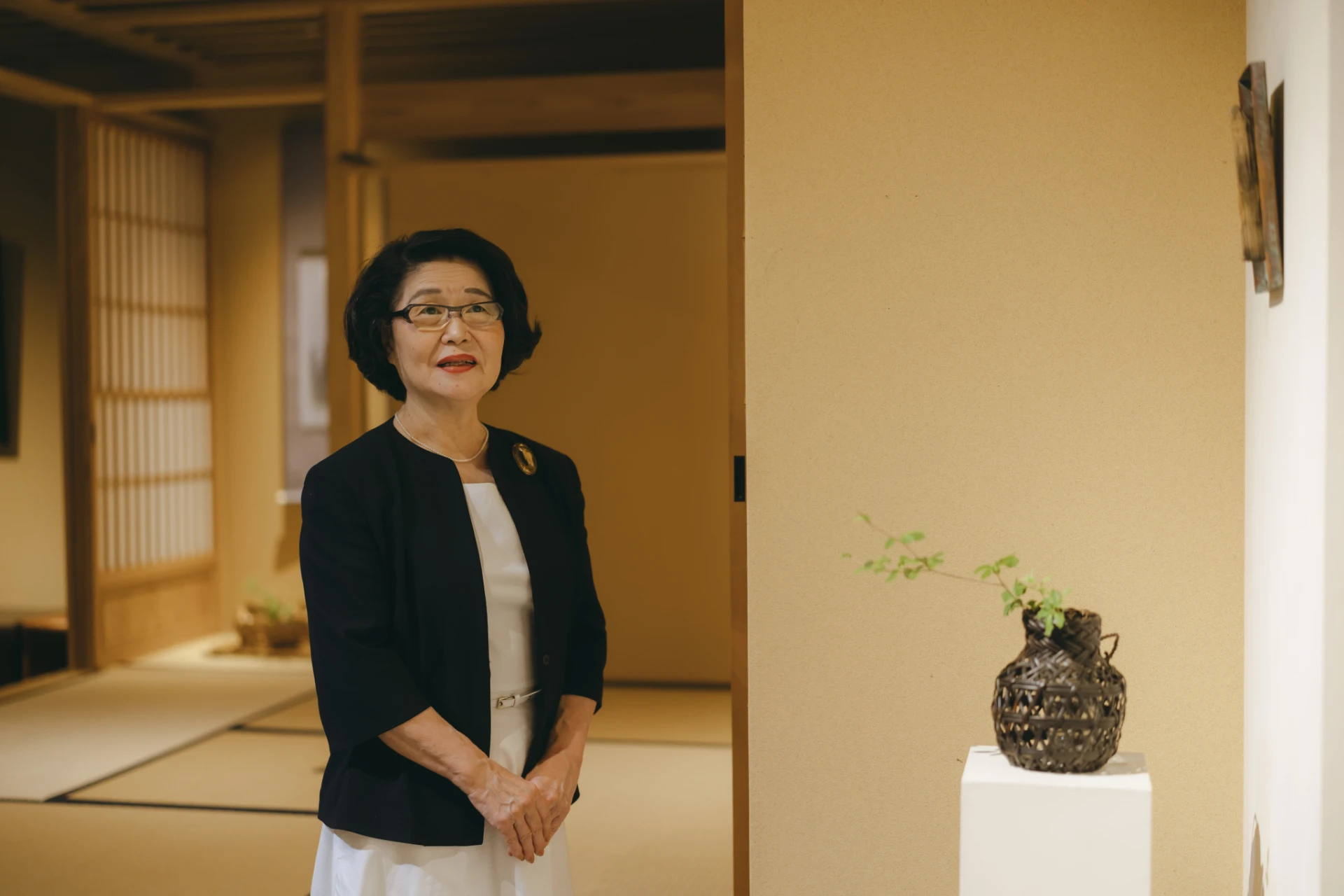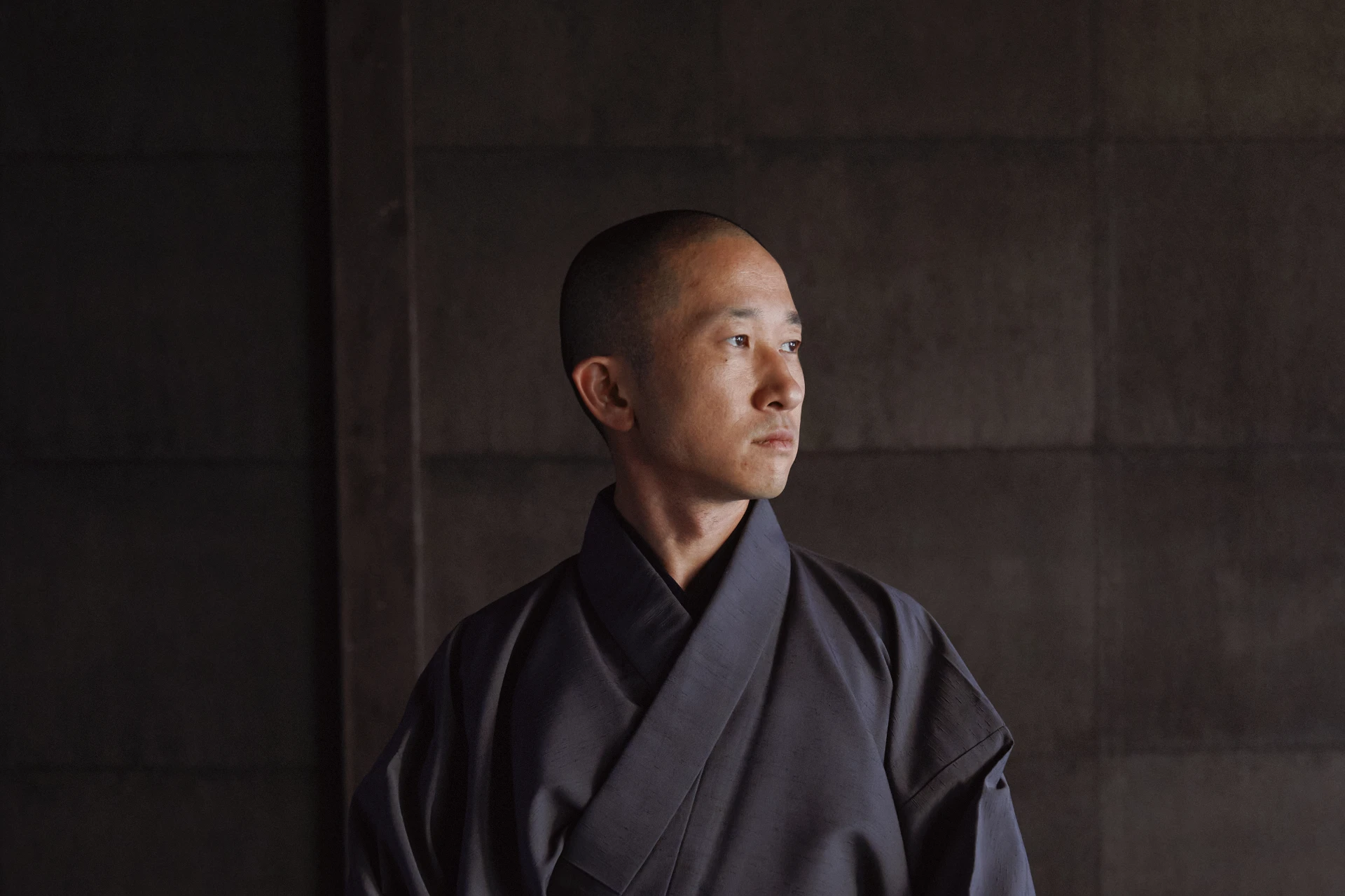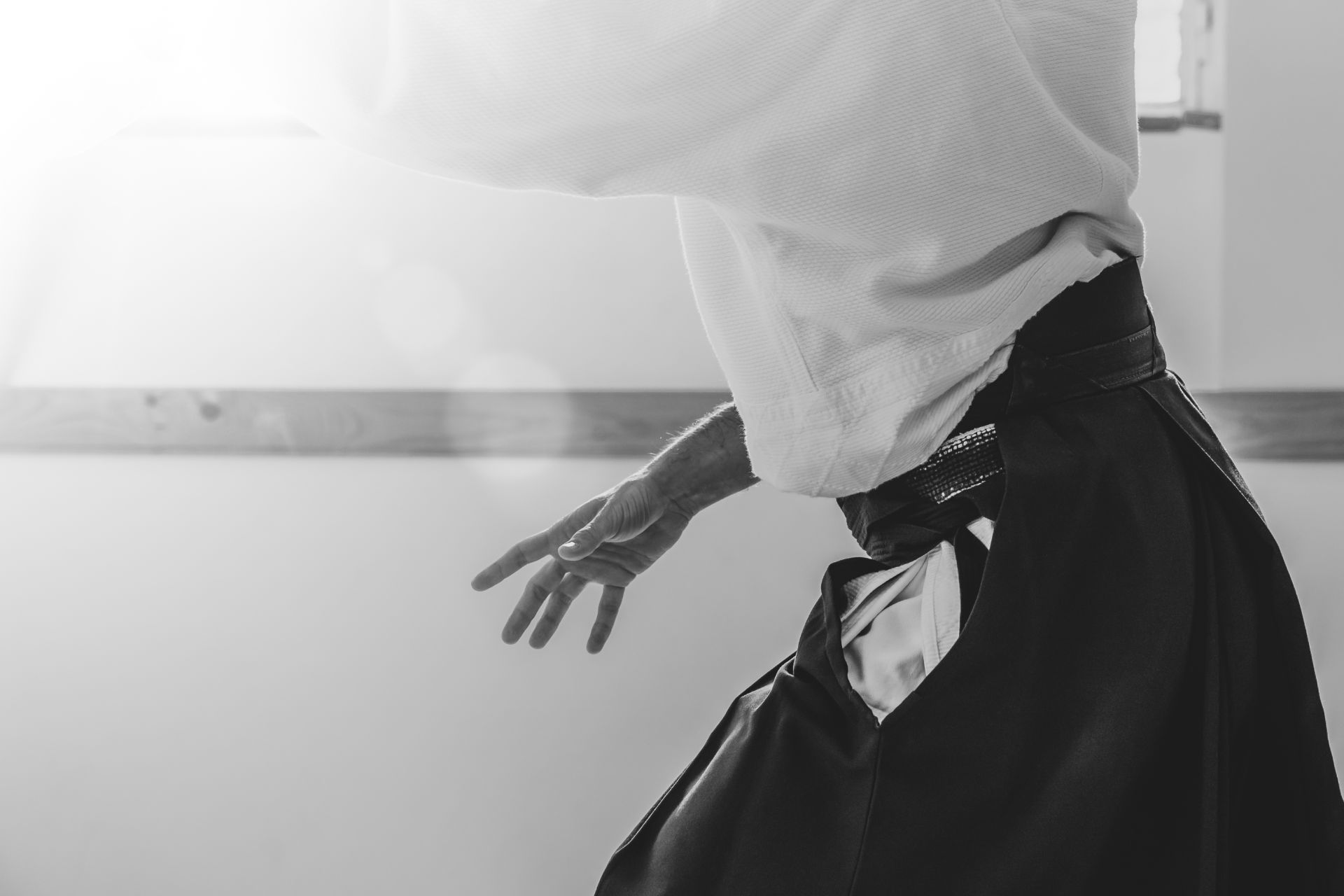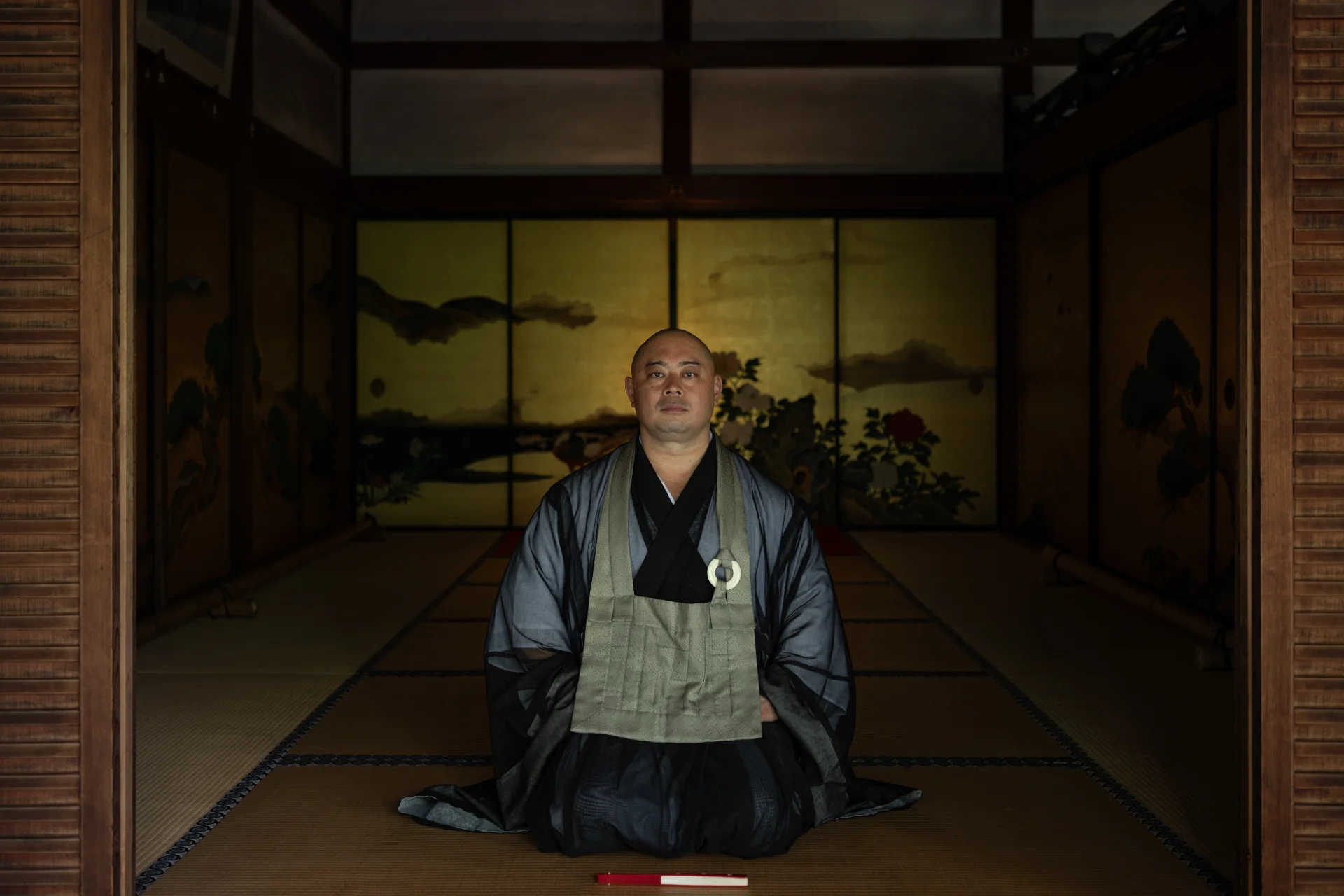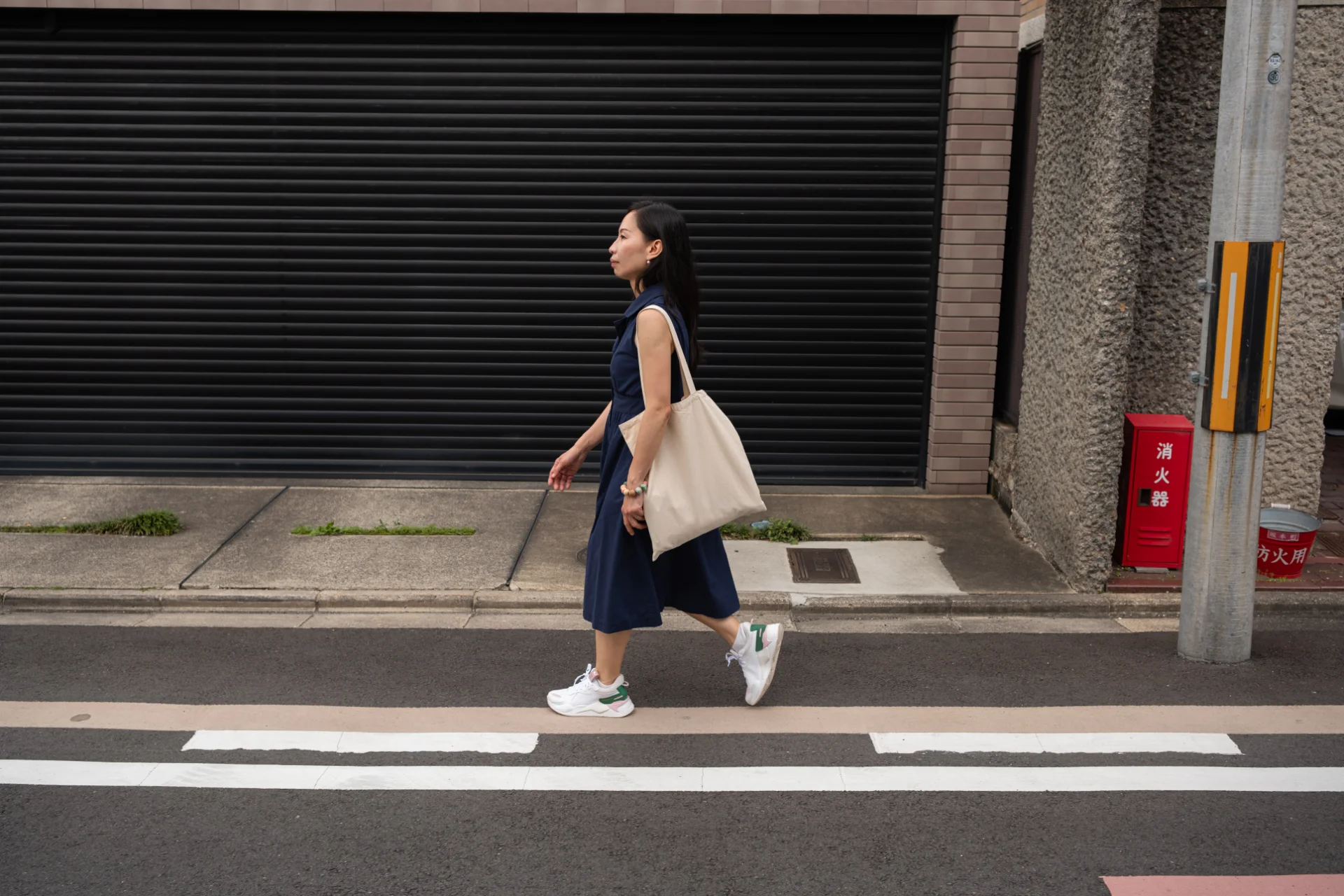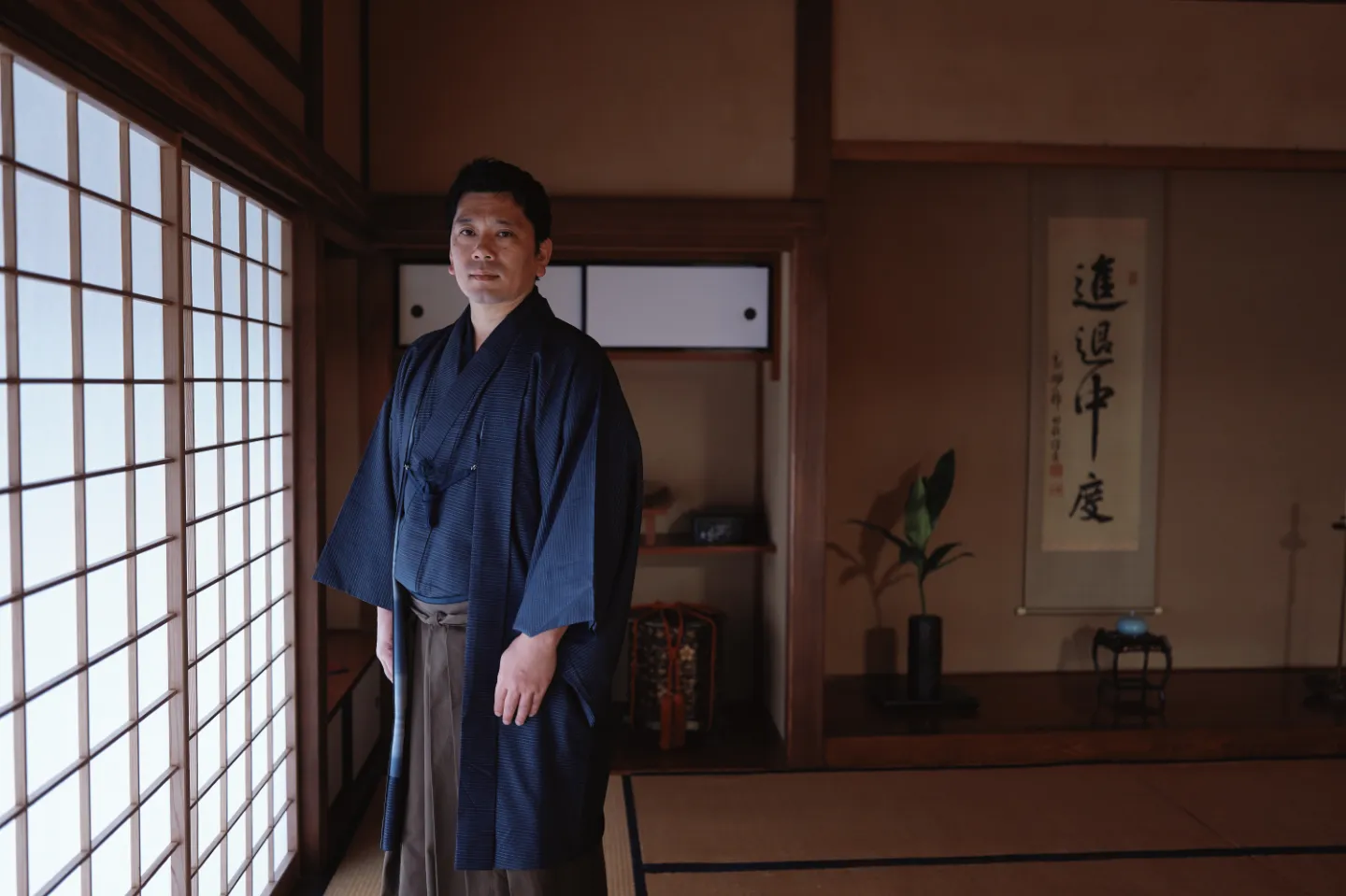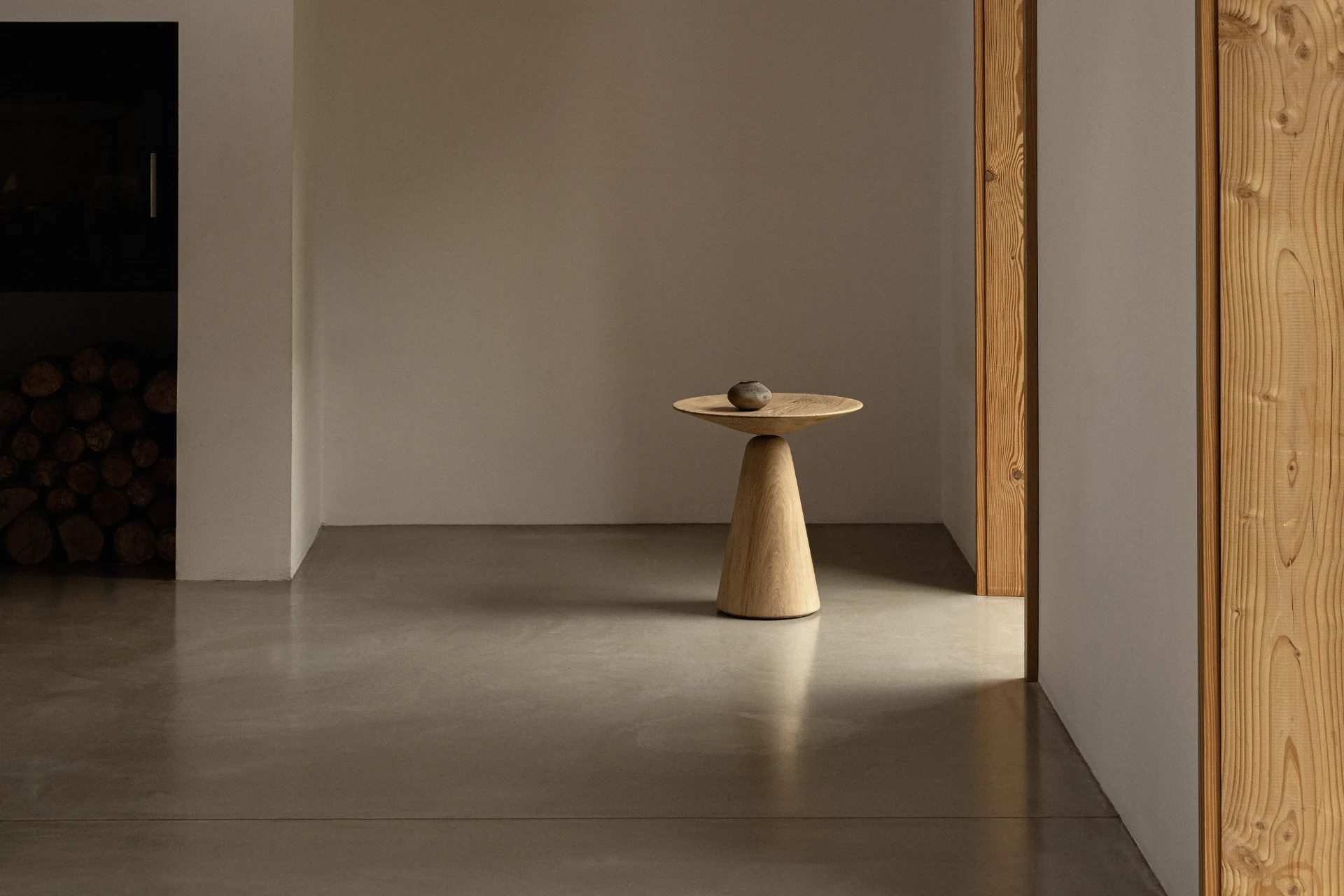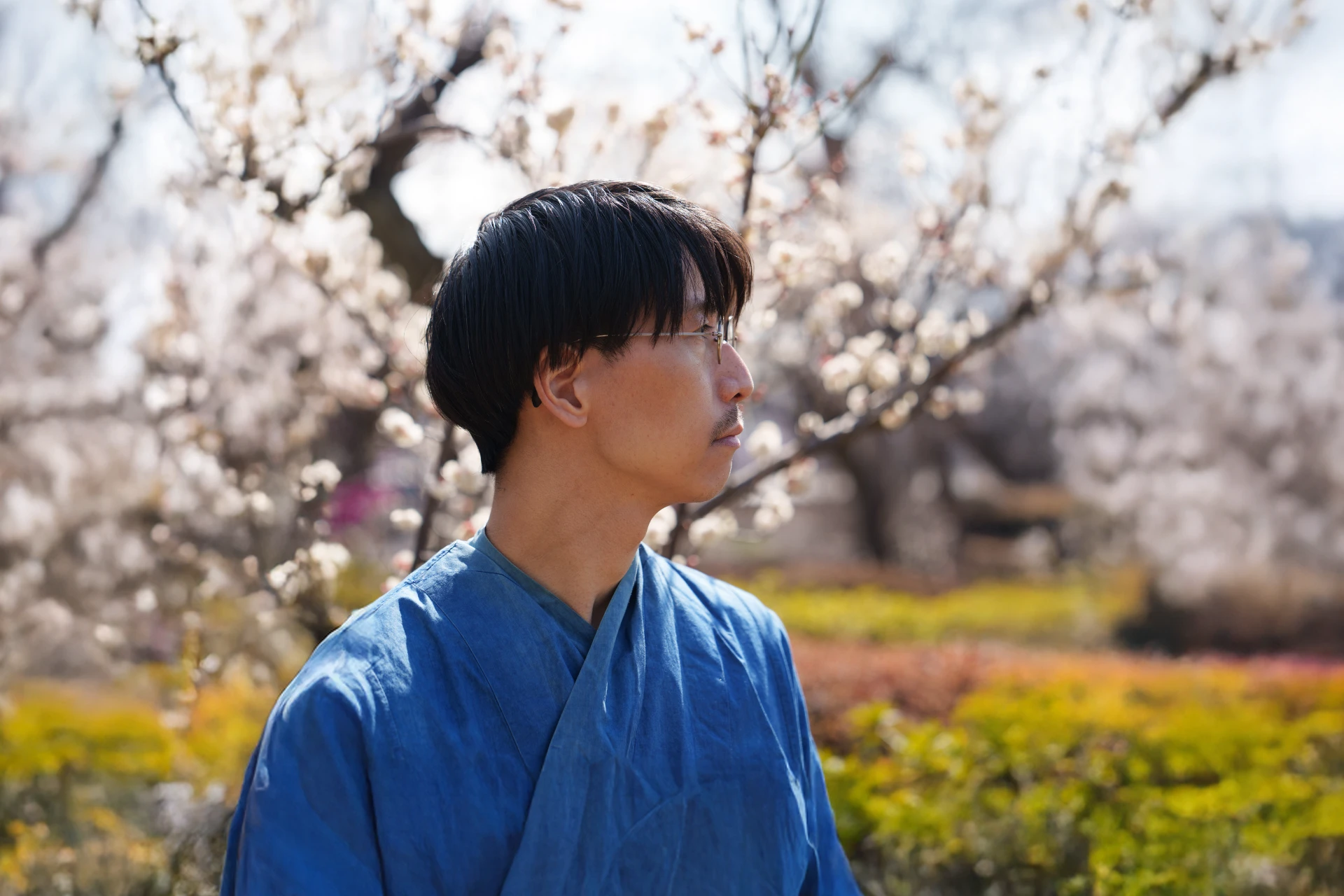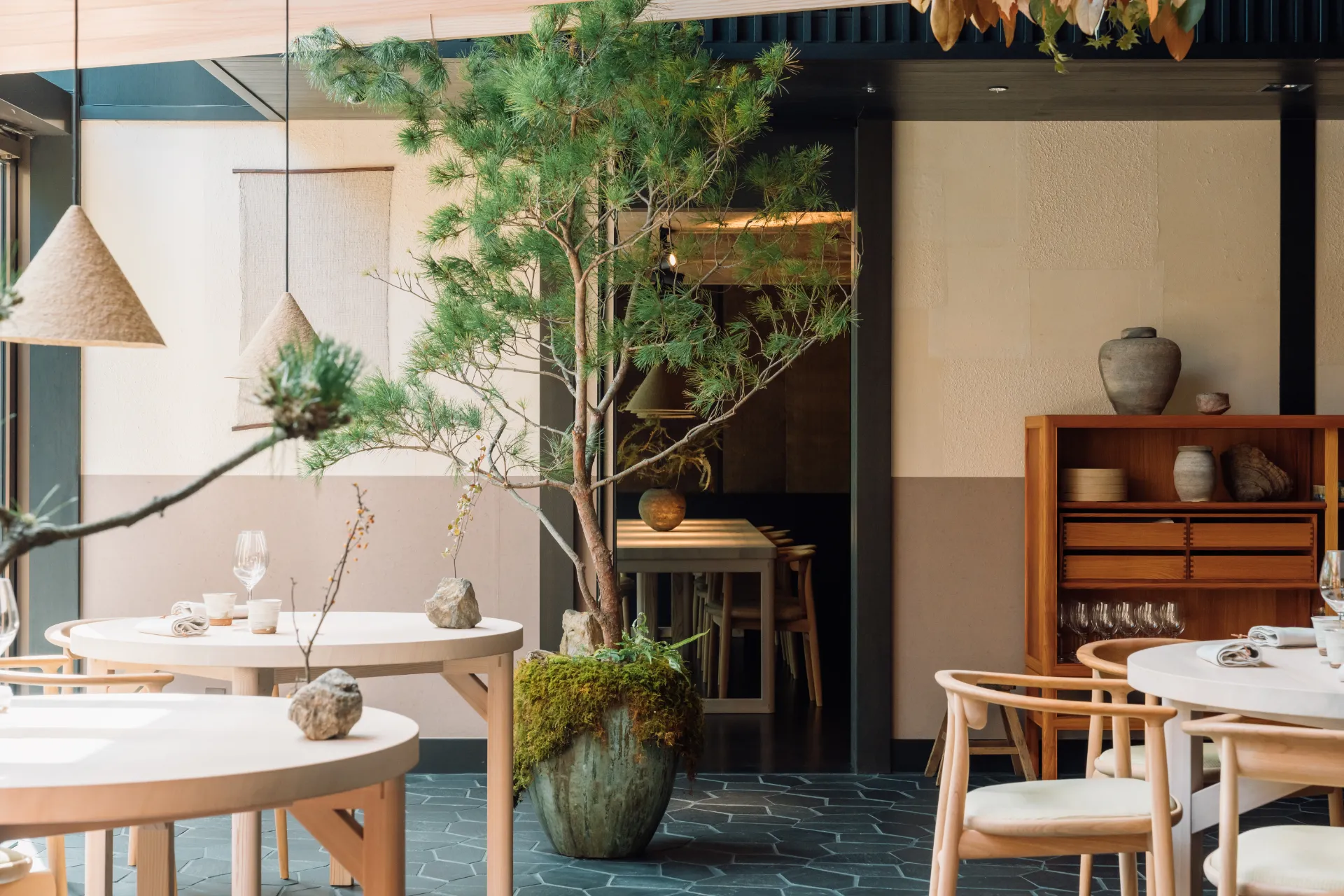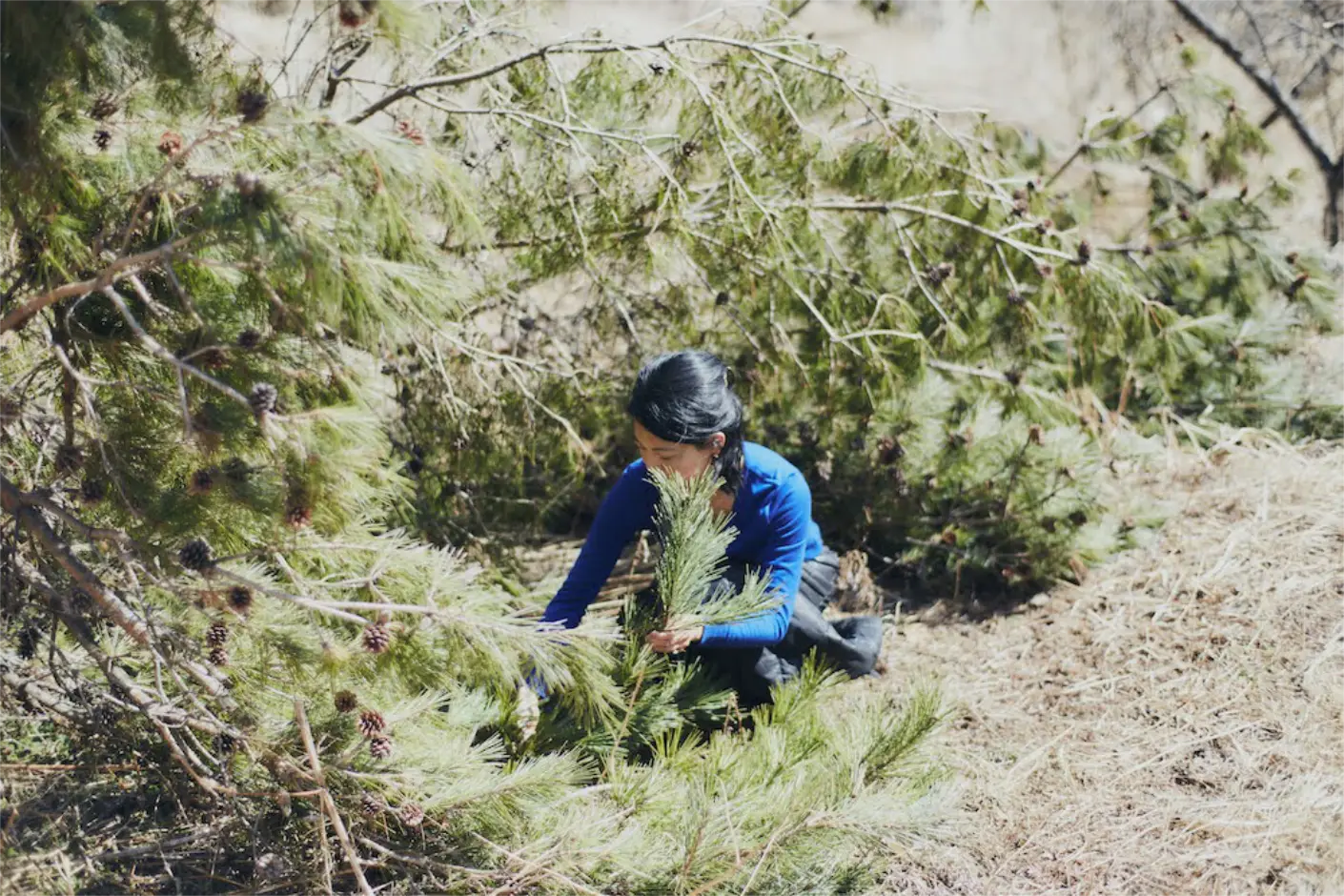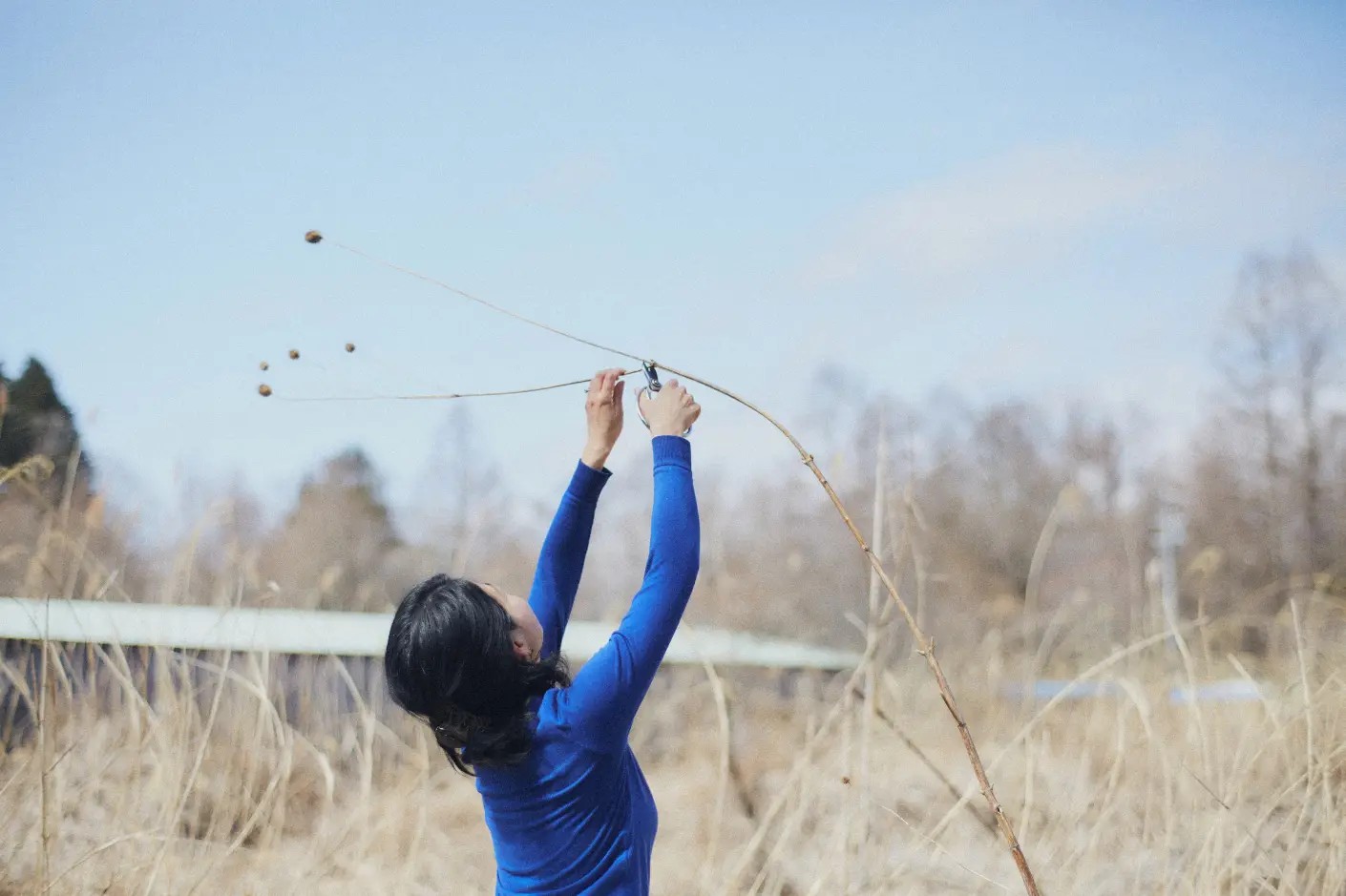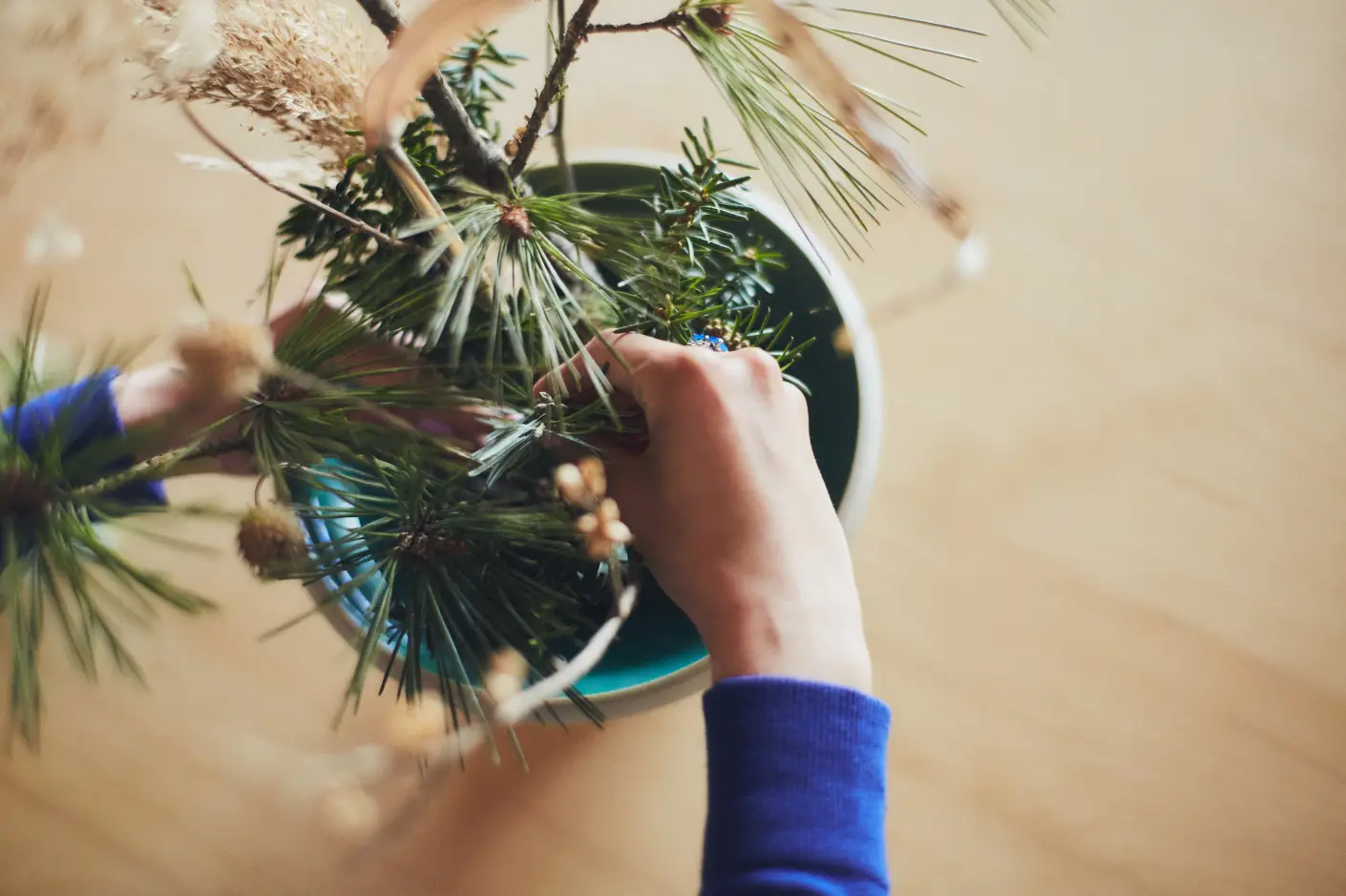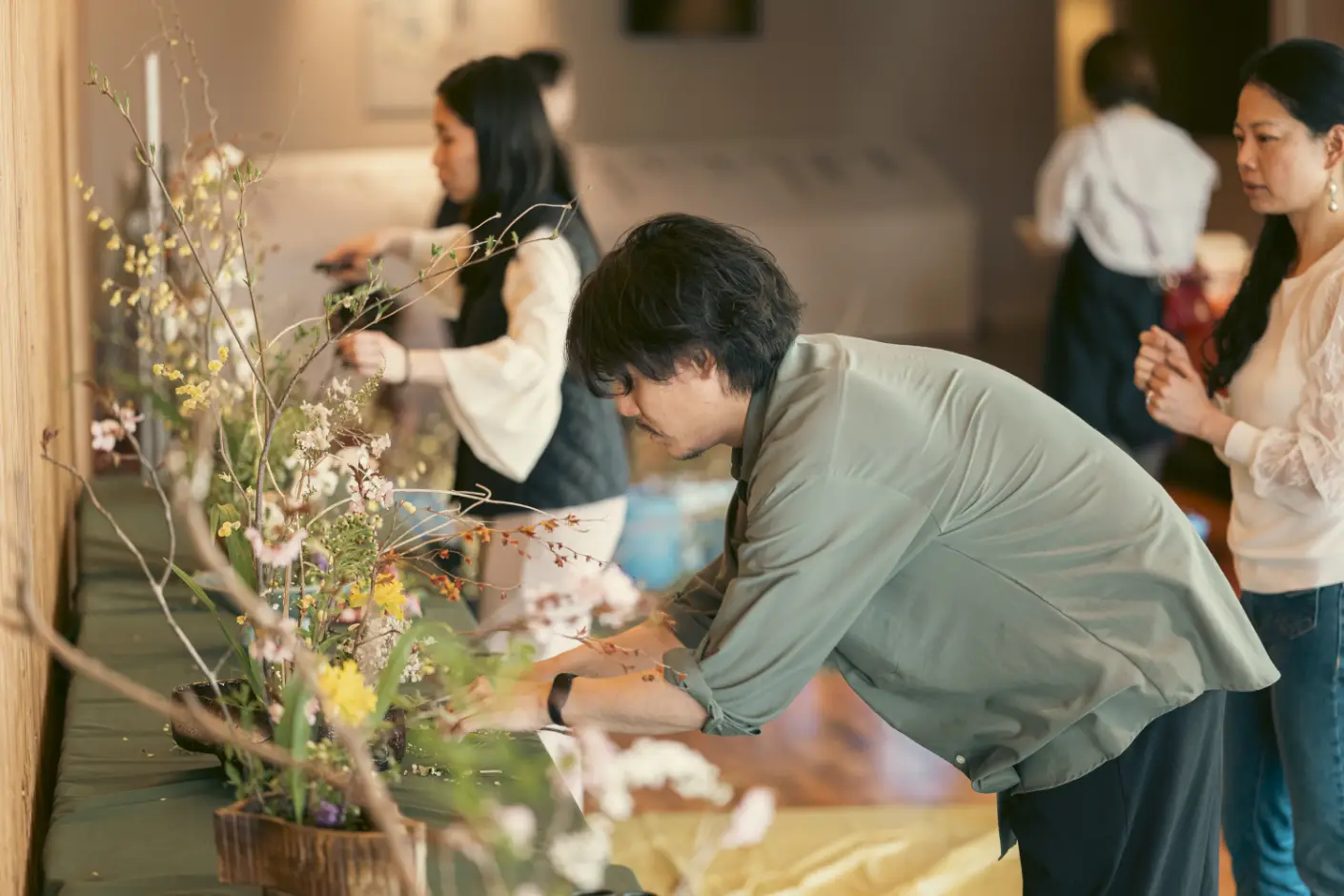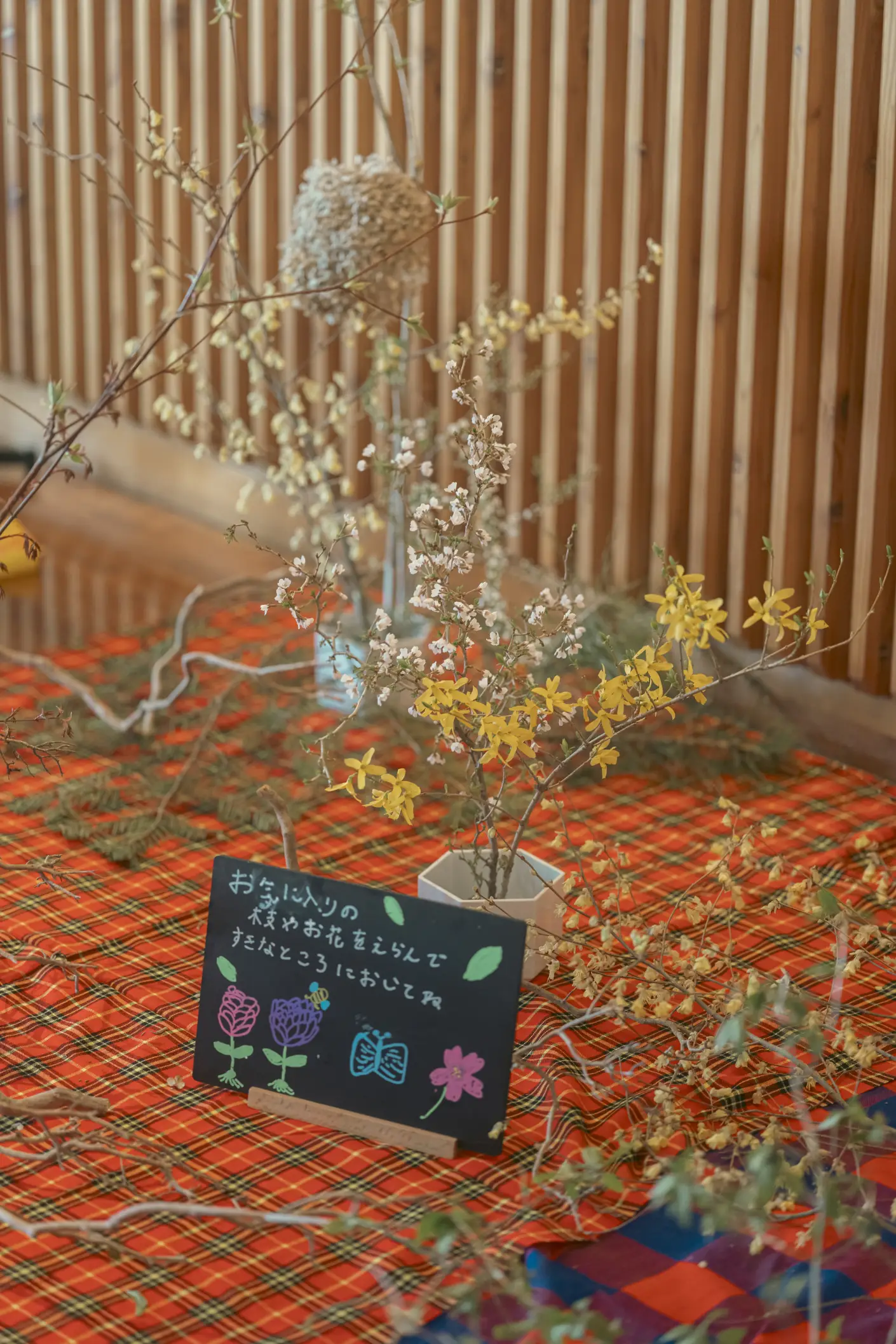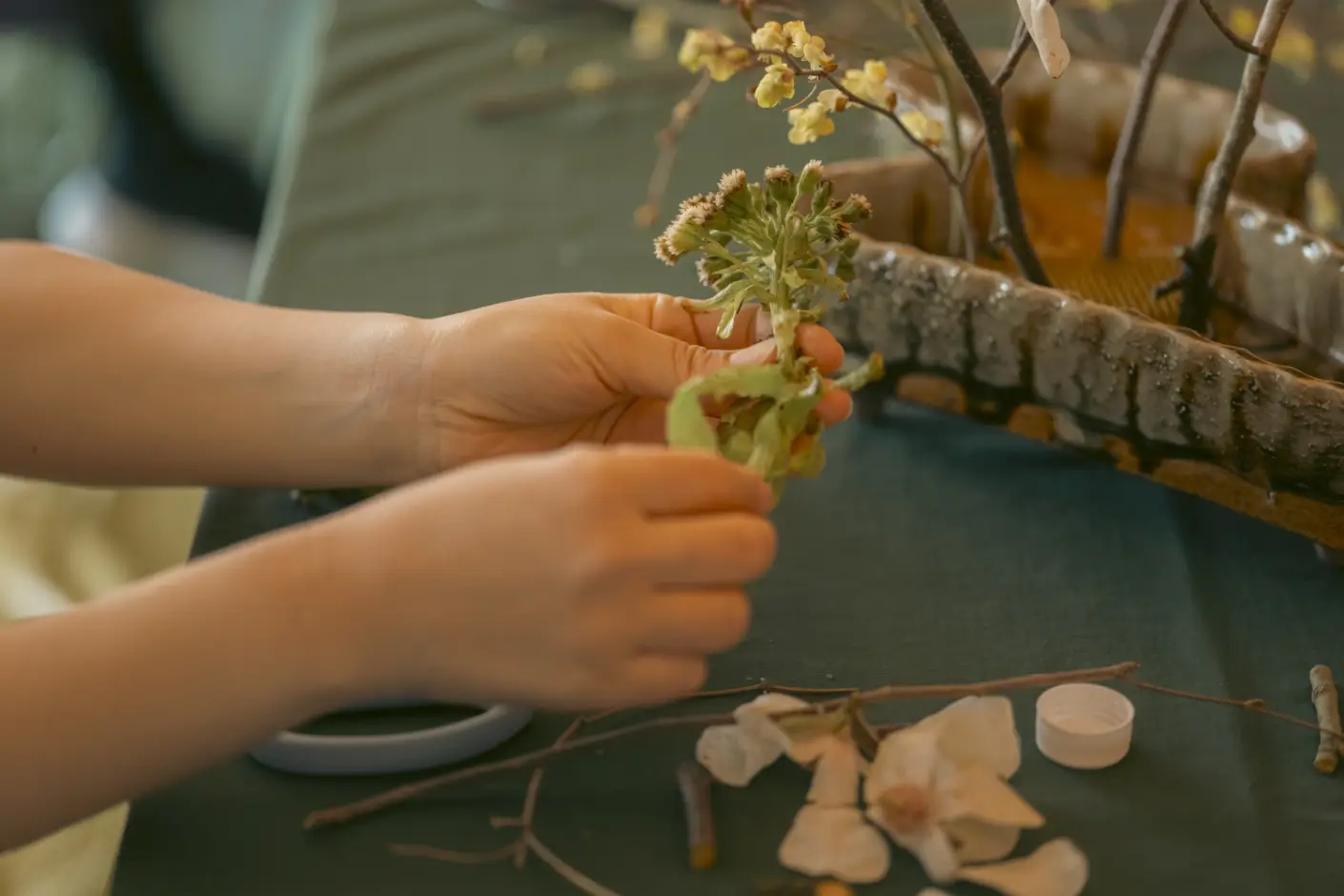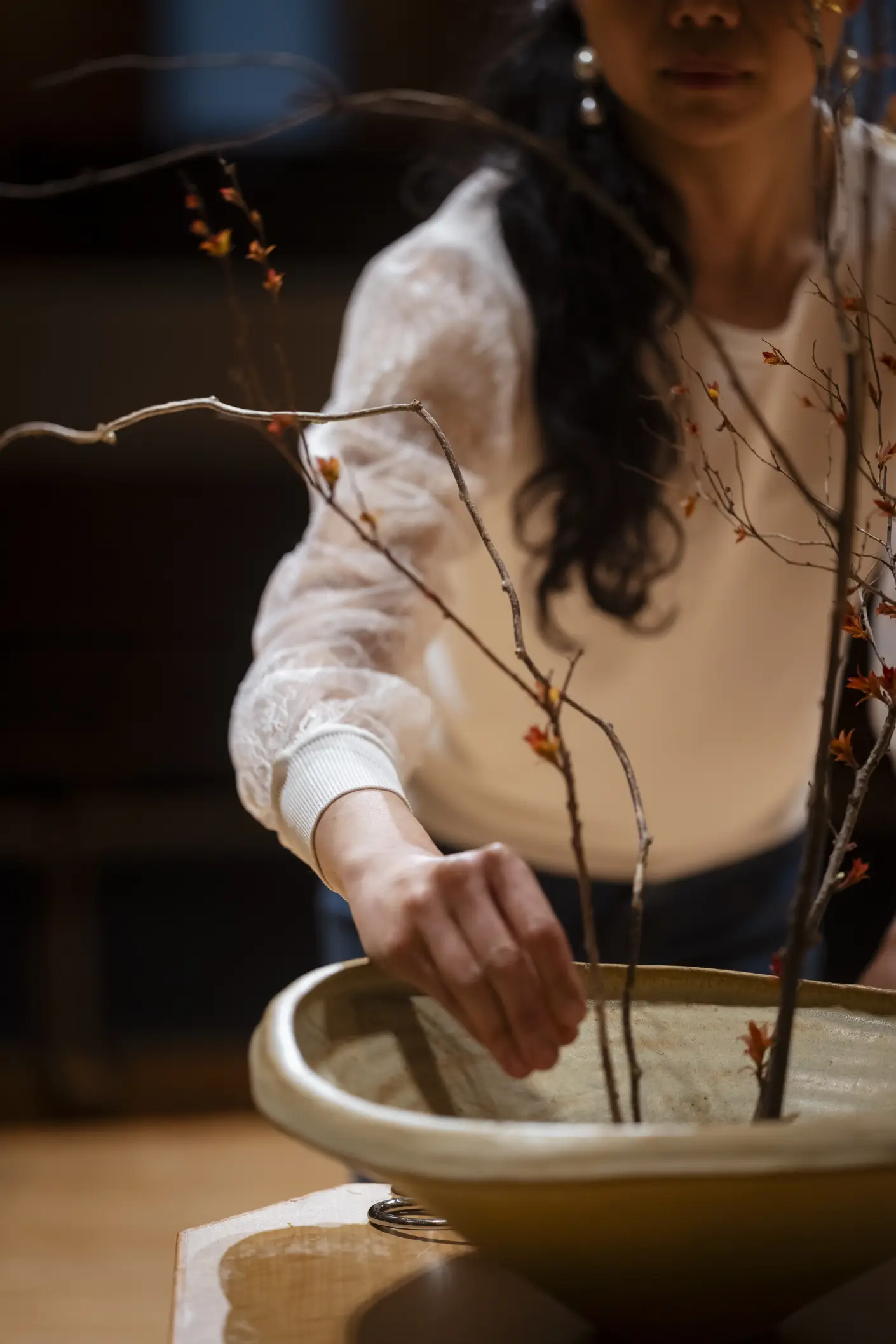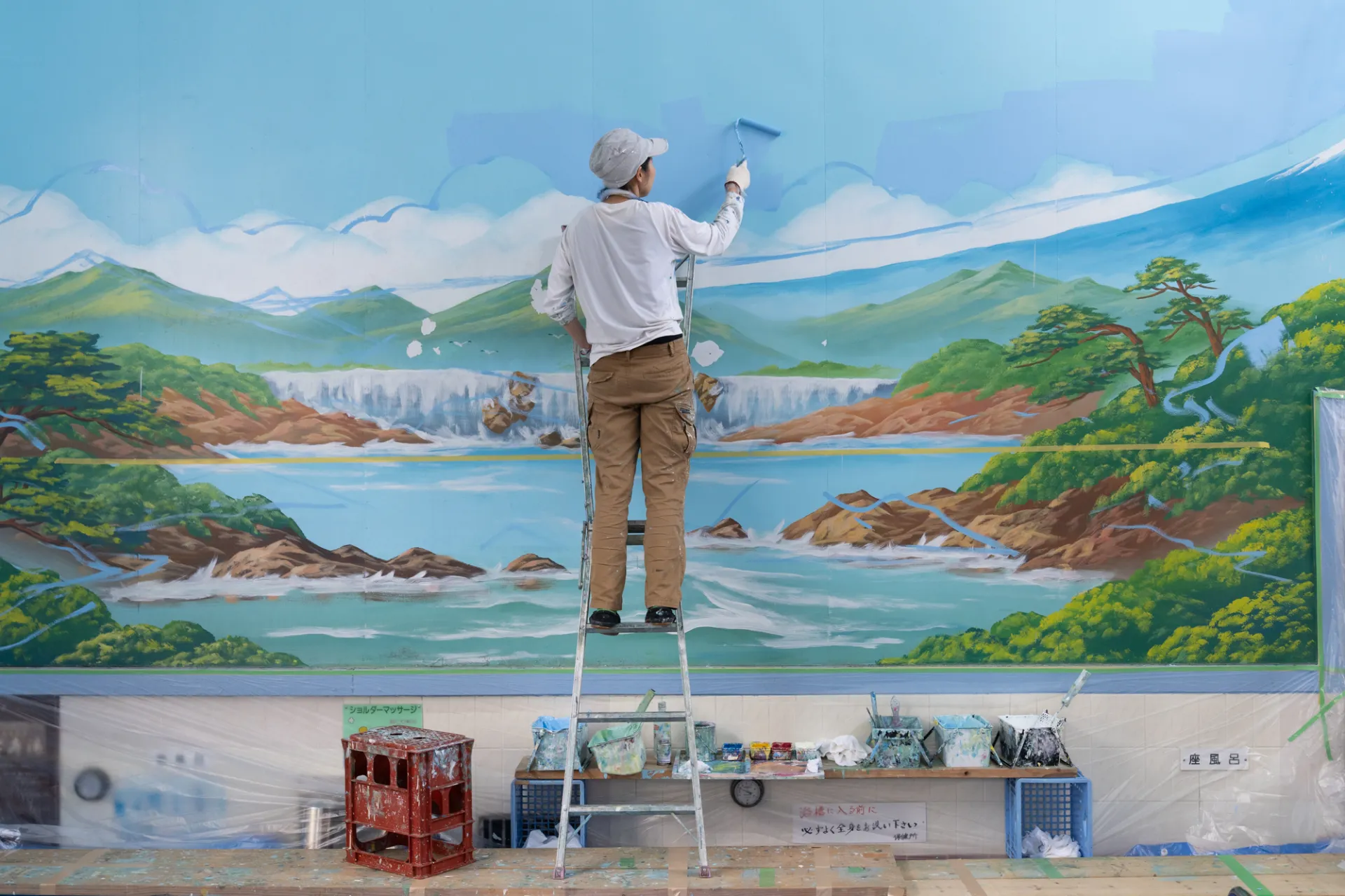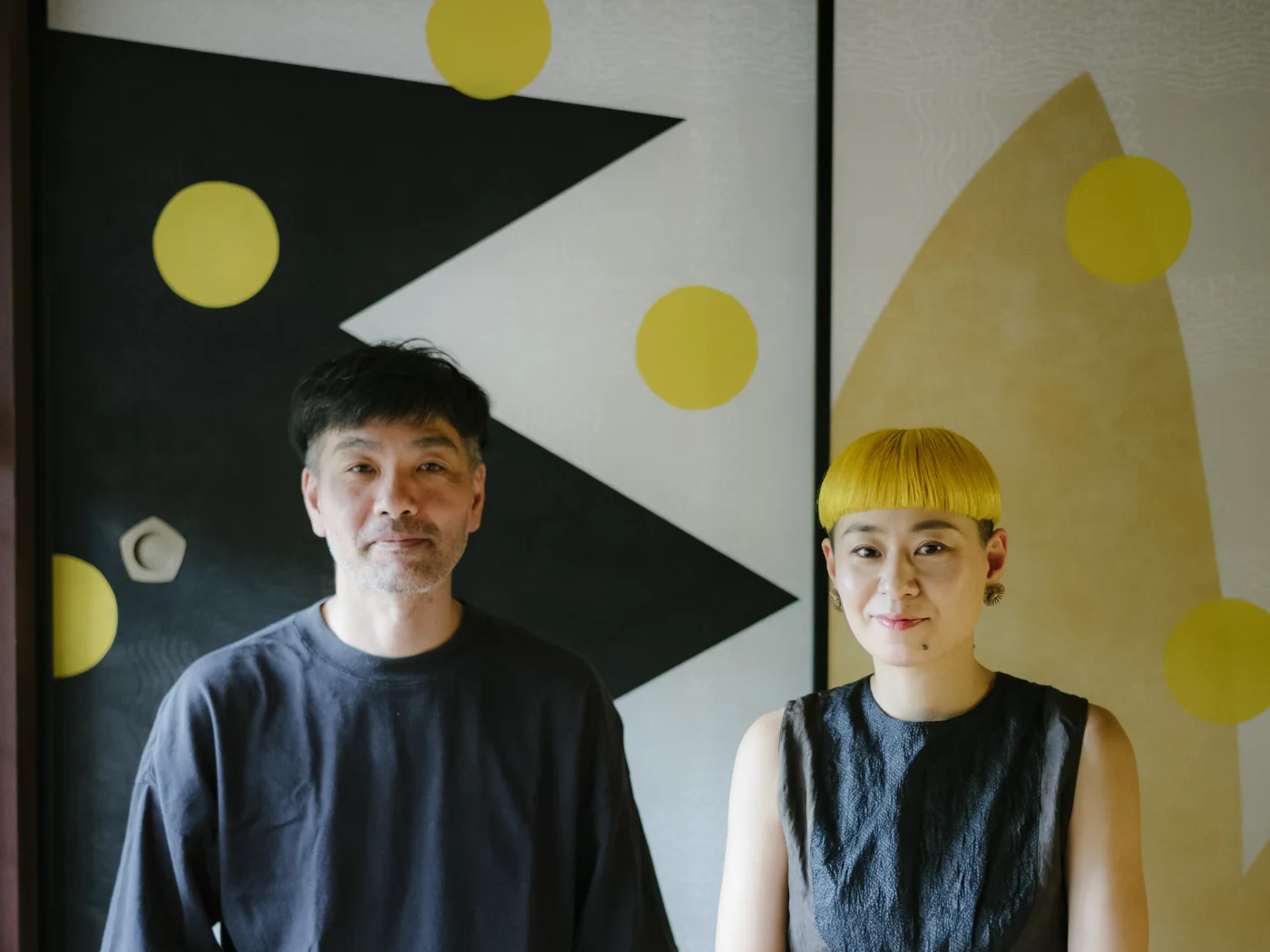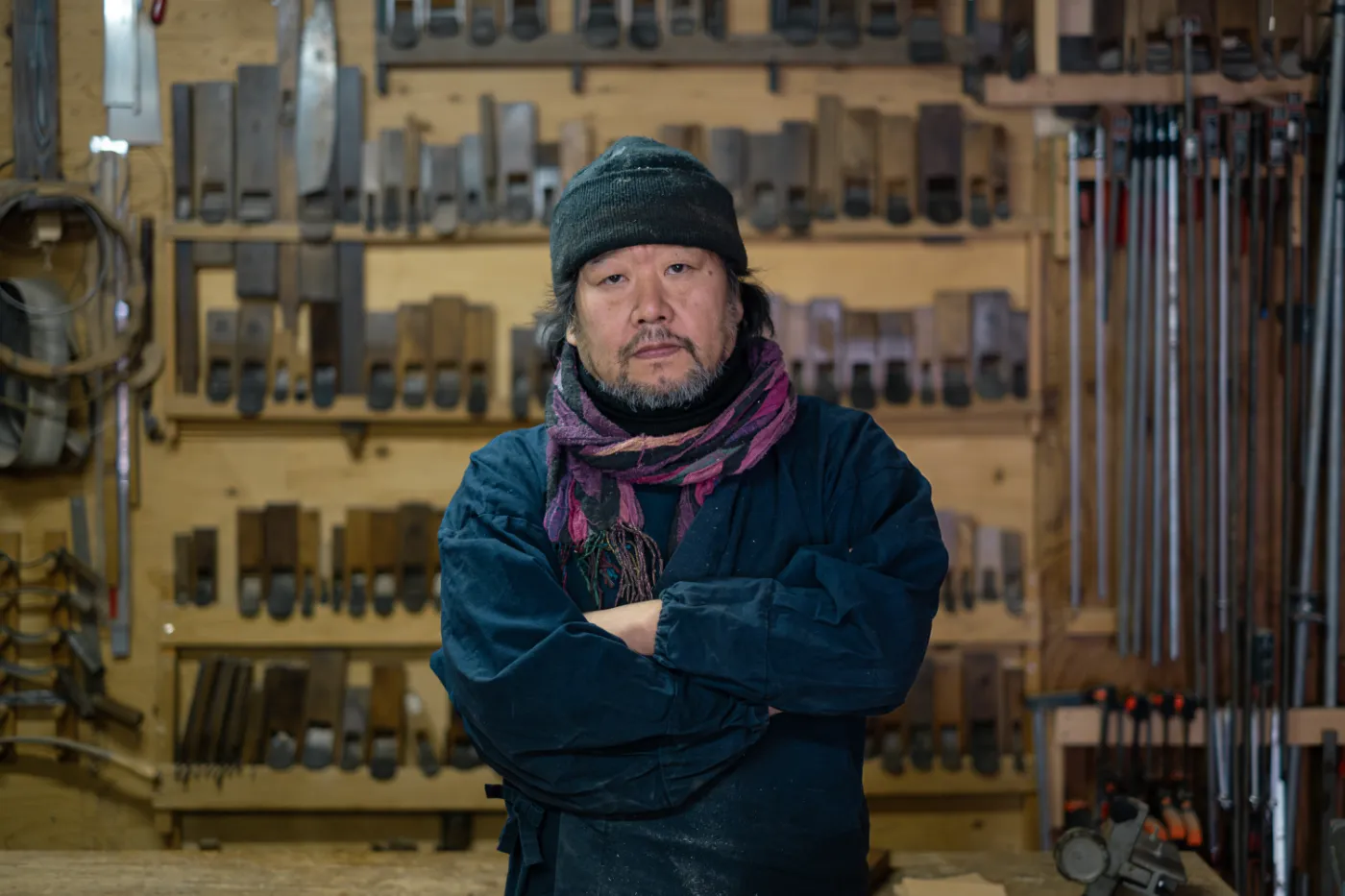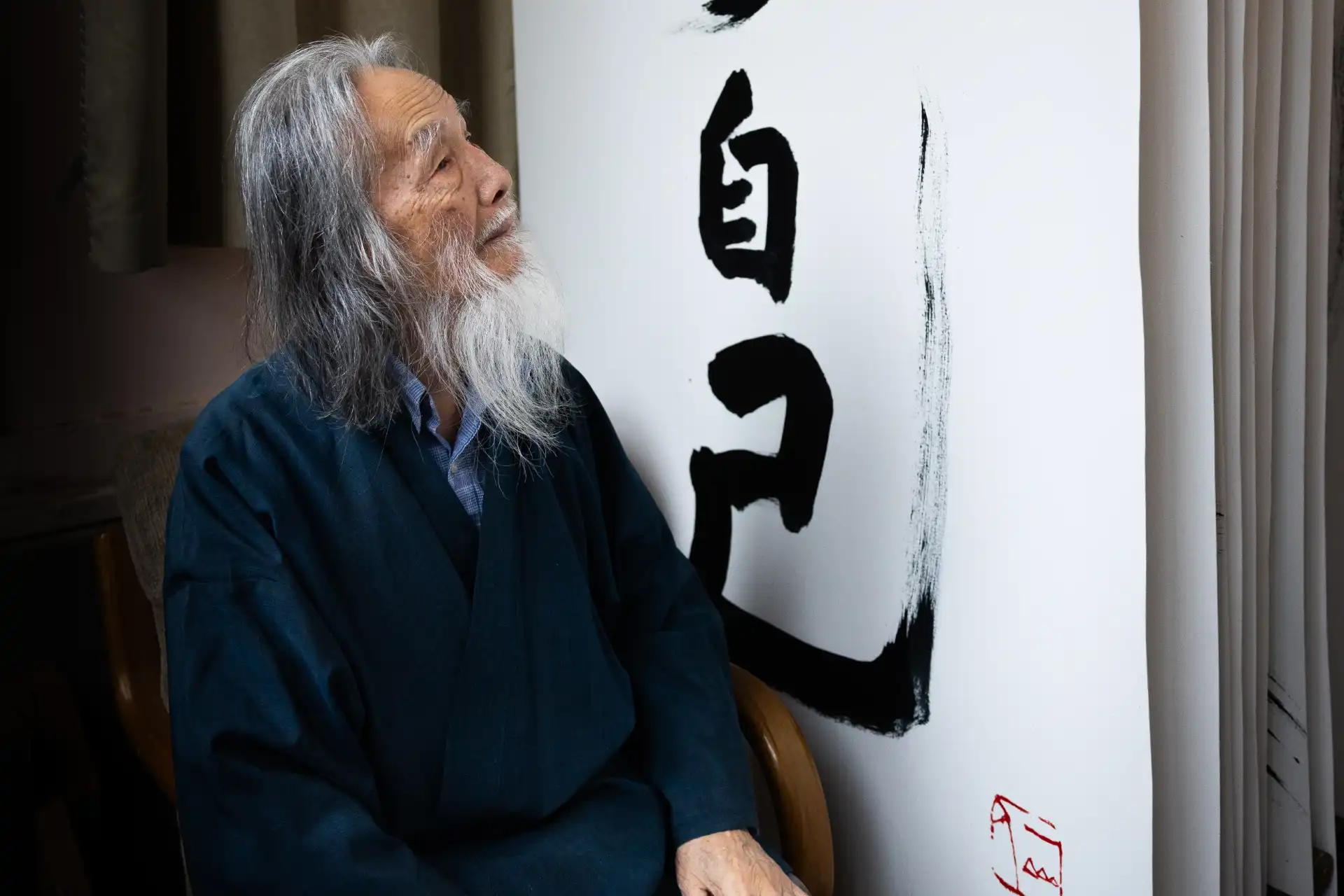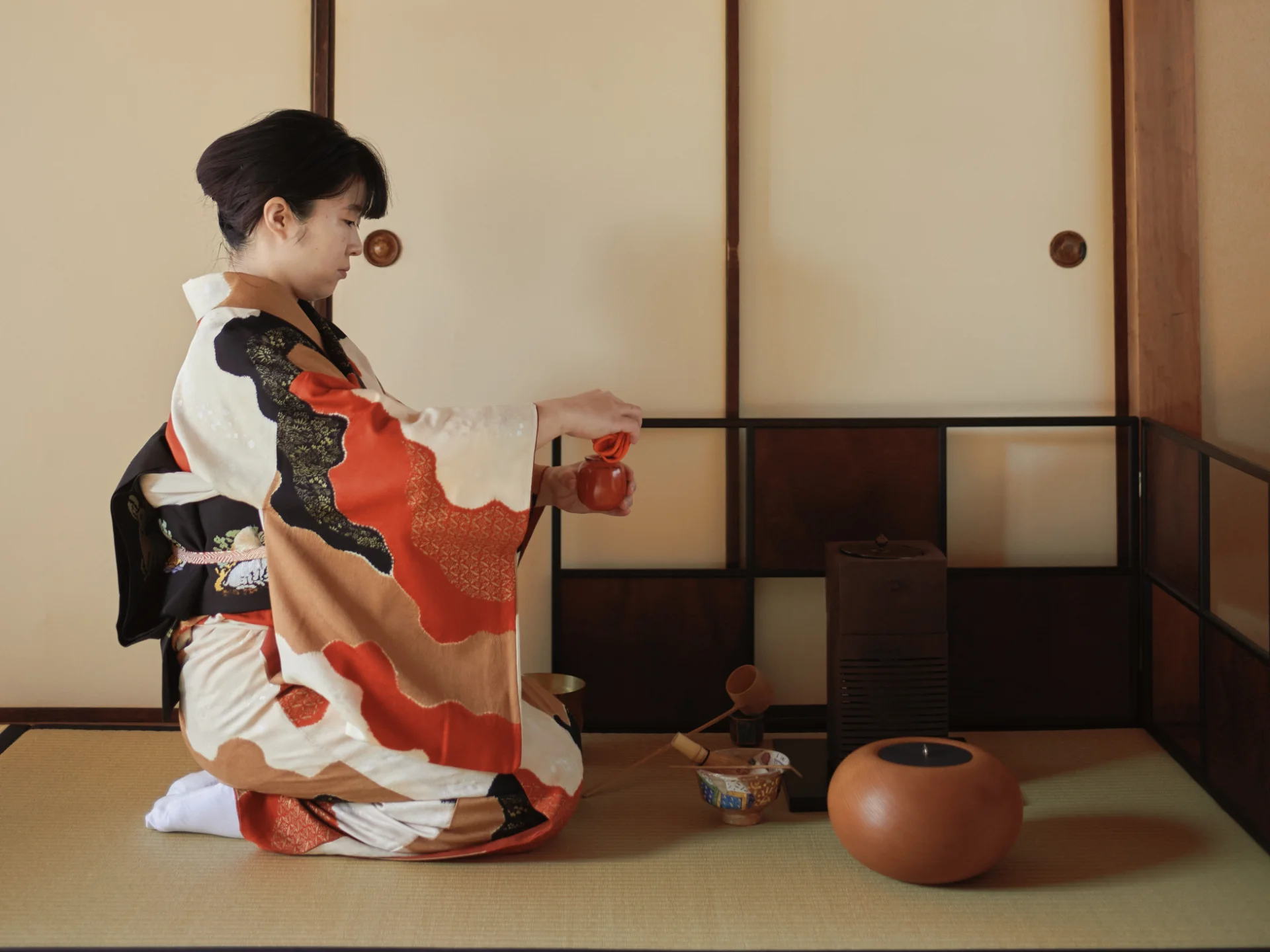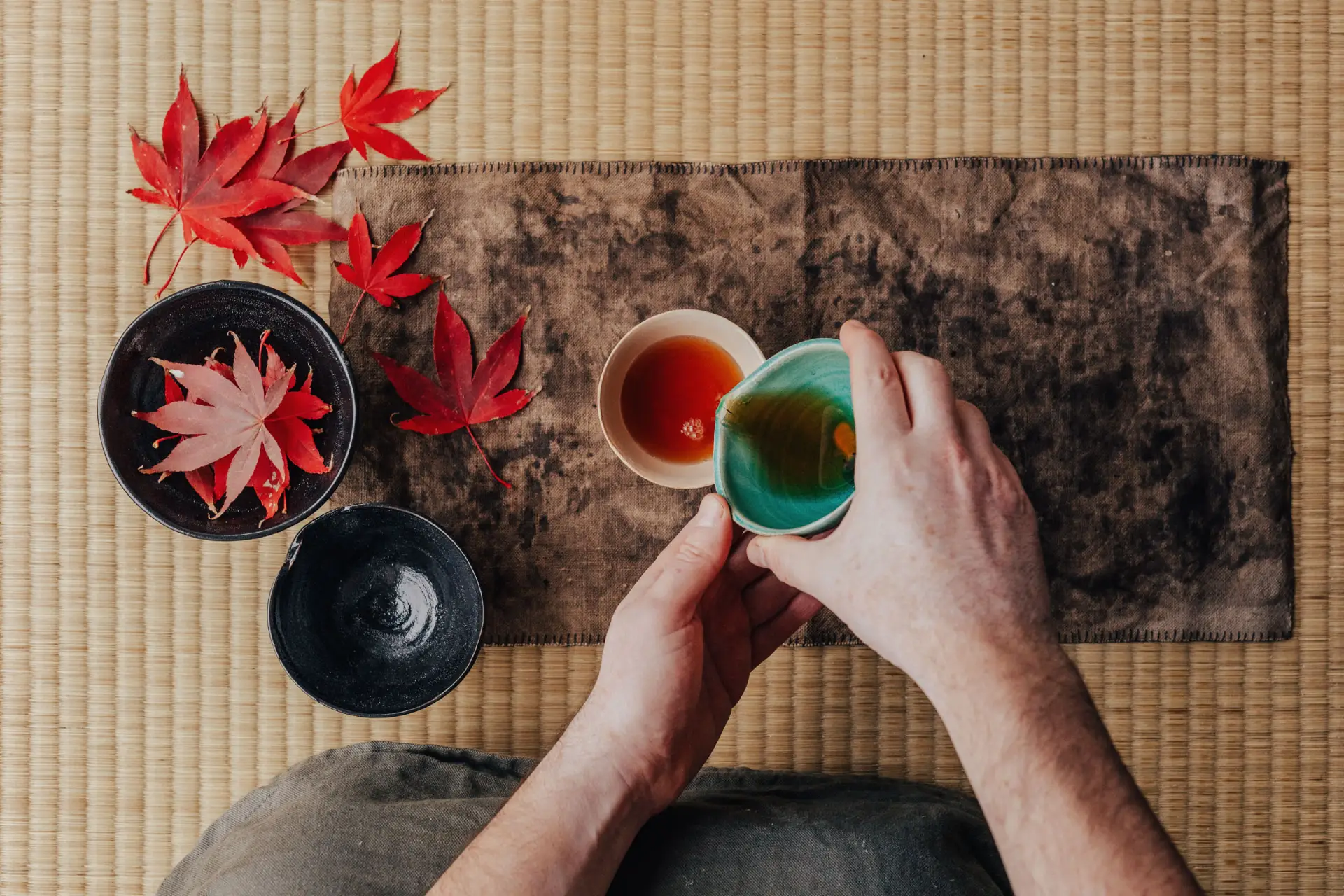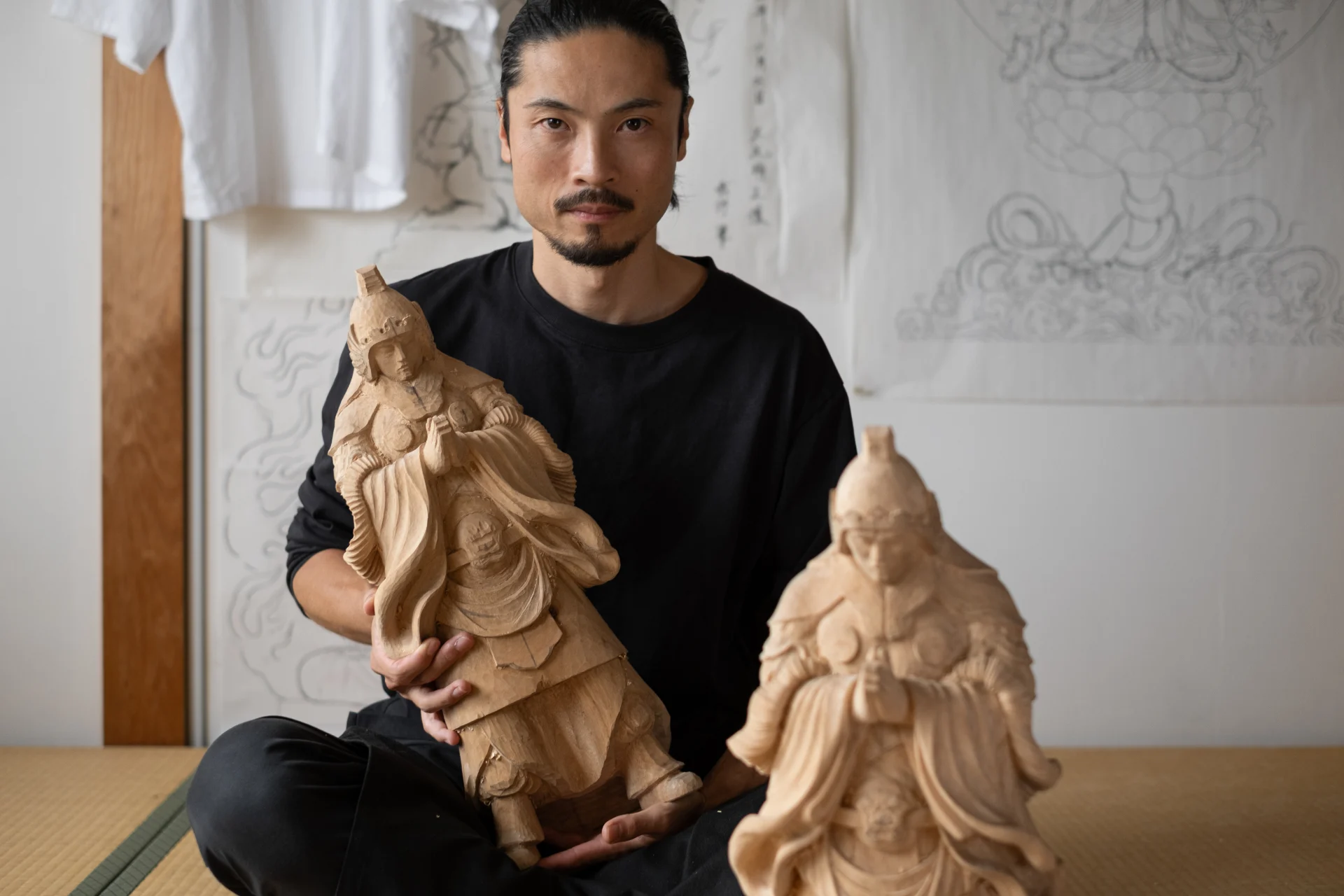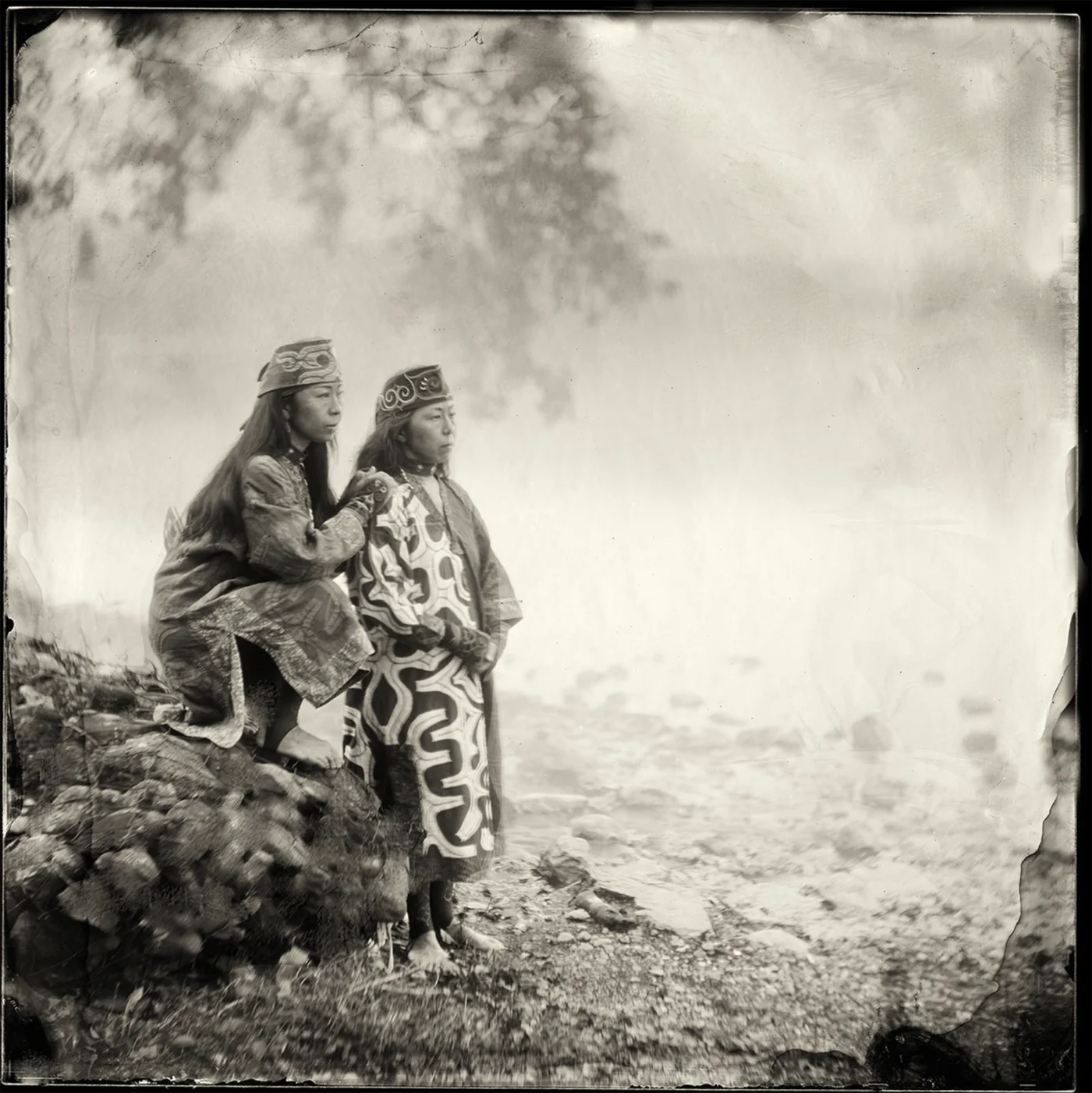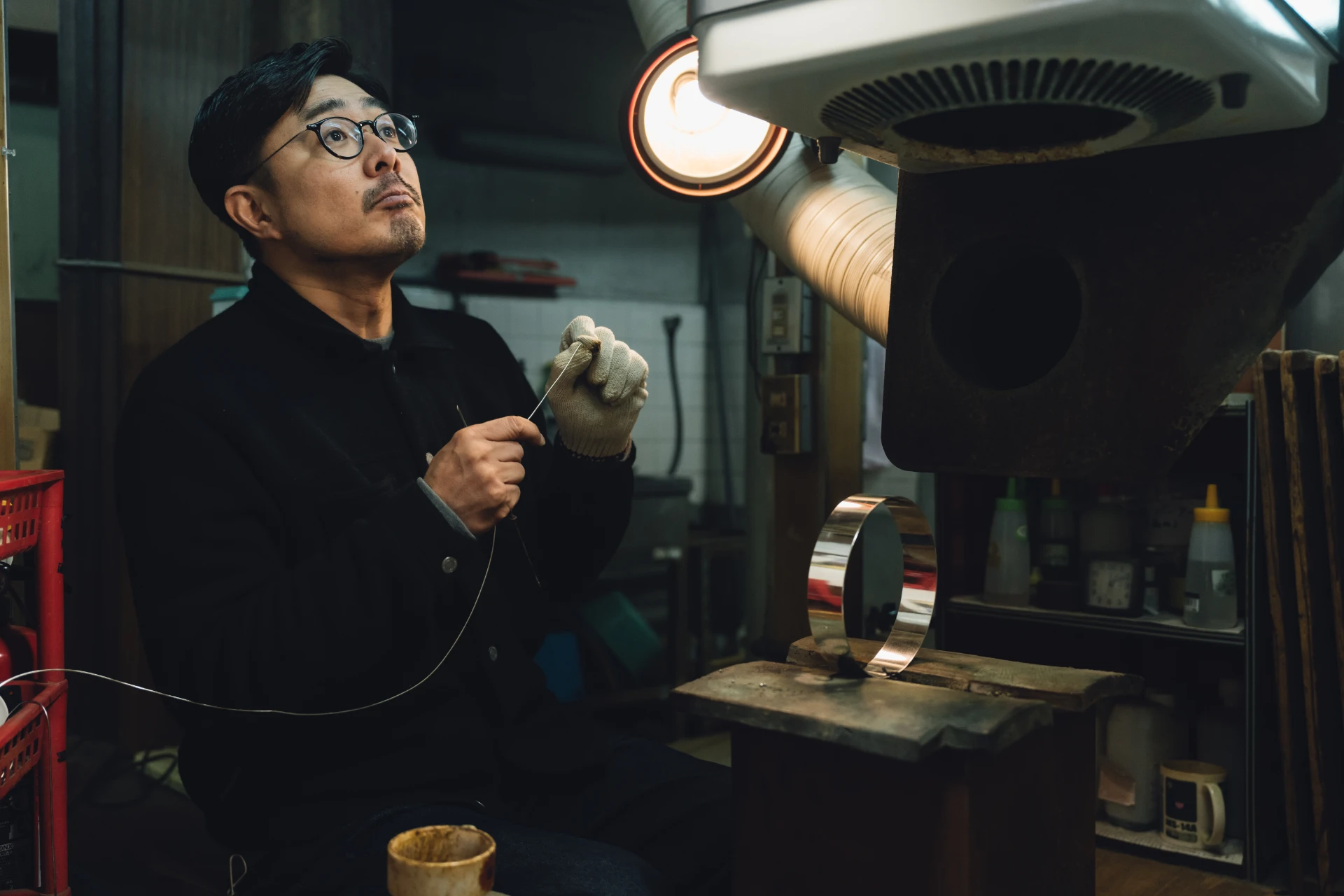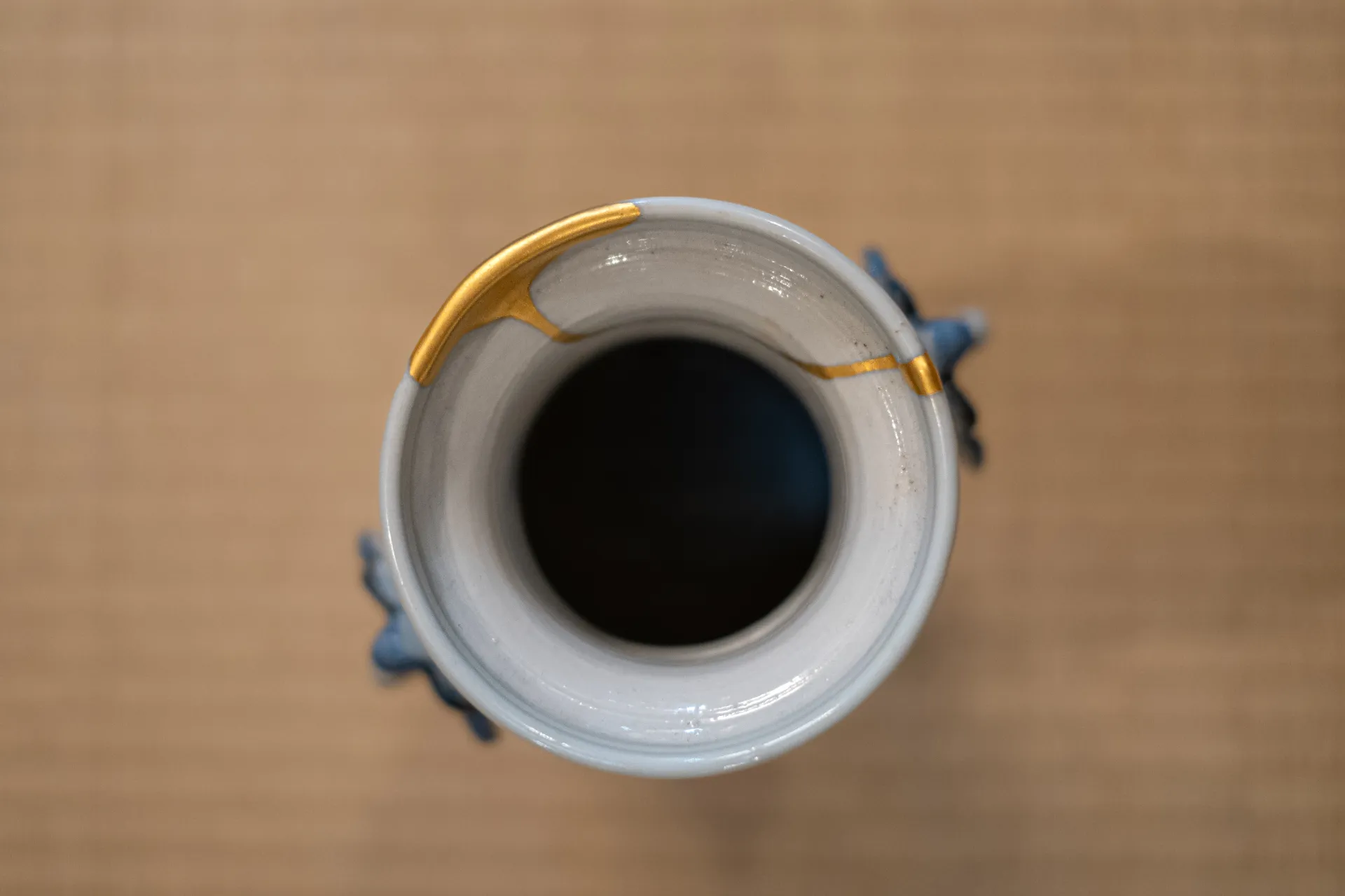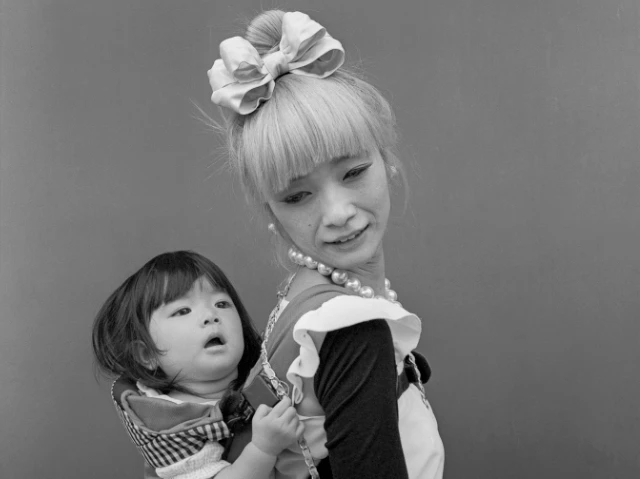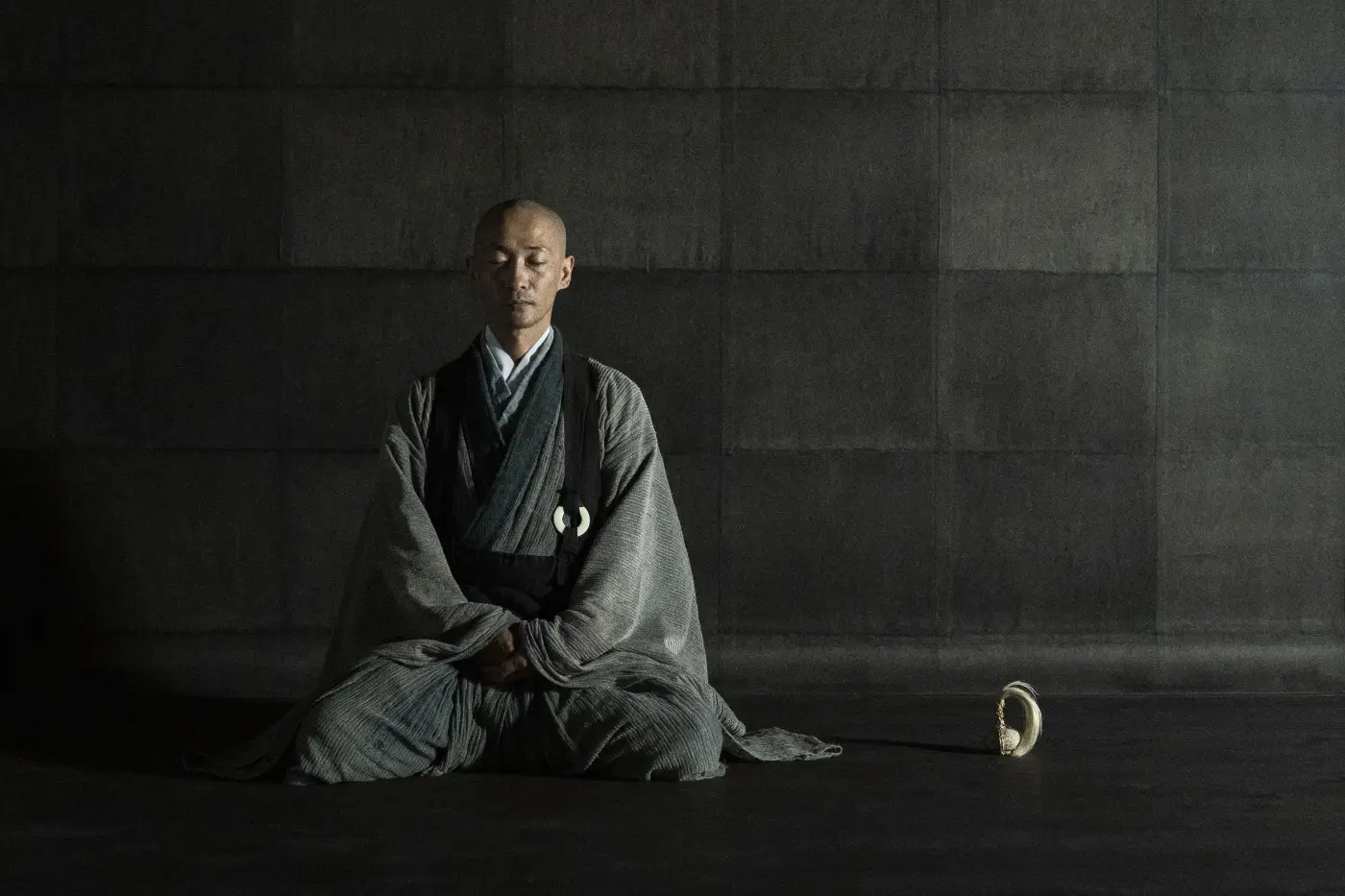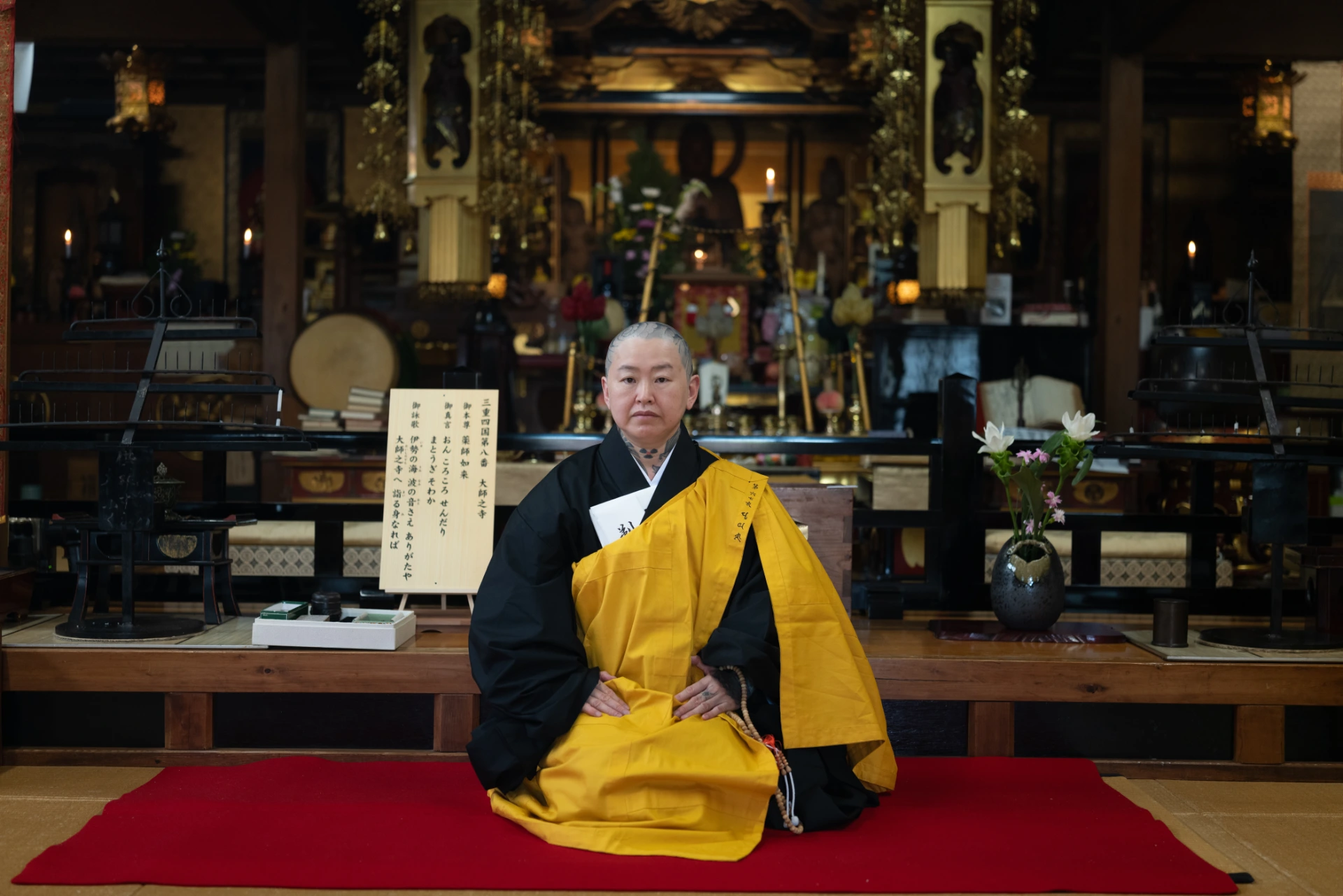Listening to the Voice of Flowers
Ikebana is a unique practice that lets us be both mindful and creative. It consists of two Japanese words, ikeru and hana. Combined it means arranging flowers in a way to let the flowers live.
In ikebana we see and feel the flower in our hand attentively and try to sense what kind of length, angle and location in the vase would let each flower look most beautiful. Then, through the process of letting each flower live, the whole work eventually emerges.
It’s a process of attunement, creativity and emergence.
In ikebana, we listen to the voice of each flower. To listen to the voice of the flower, we need to calm our mind, let go of our ego and attune deeply to the present moment. If we get caught up by our ego and attachment to a certain outcome, we leave the present moment and are no longer attuned to the flowers in front of us.
In the same way, when we cut a flower too short, rather than being stuck with the regret of what you did in the past, ikebana invites you to return to the present moment, accept how things actually are and see how you can let this shortened flower look most beautiful. Ikebana is more about working on our inner world than learning skills and theories.
Letting flowers live by listening to the voice of flowers. This is beautiful and easy to say, but it is actually hard for us to do. There was a time when I could not listen to the voice of flowers at all and ended up quitting ikebana.
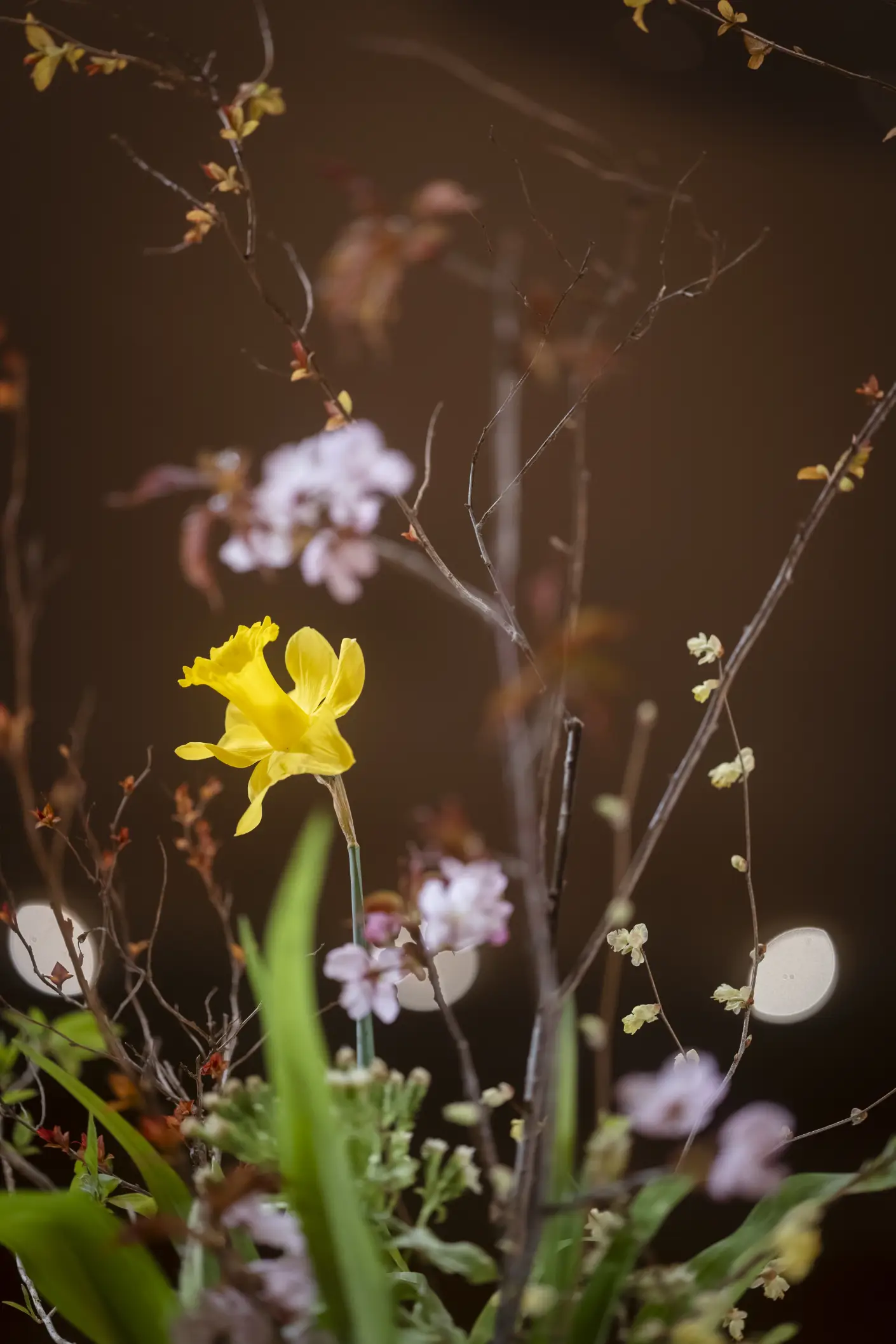
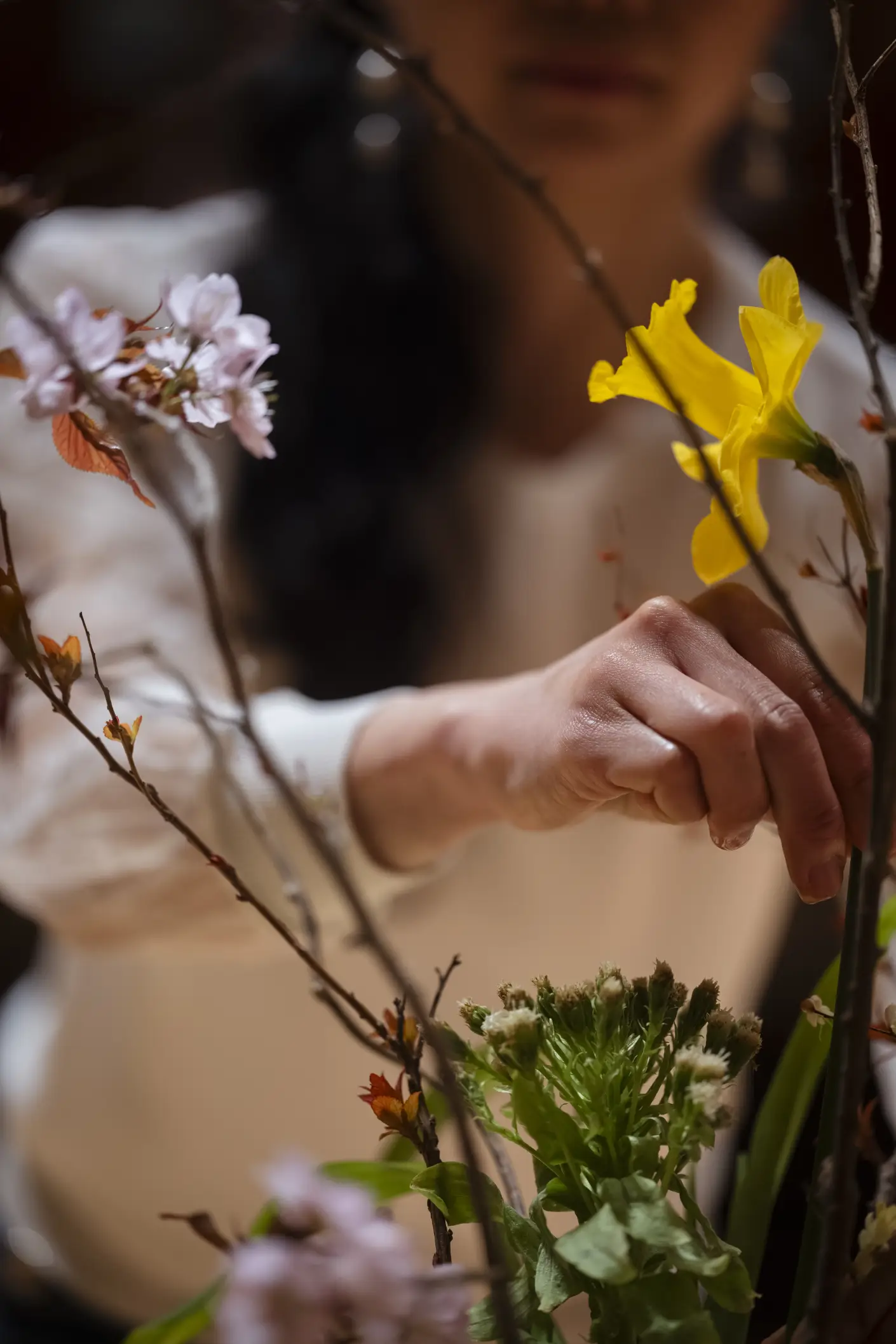
Big Head, Bigger Ego
I started my career as a management consultant at McKinsey. Dazzled by the intensity and hyper-energy at the workplace, I put every piece of myself into work. To perform at McKinsey, where consultants were expected to maximize their brain power, I disconnected from my body and senses, channeling all my energy to my head.
Sometimes, I felt like I was becoming a Martian, with a big head and almost no body. In the process, I began to lose my passion and interest in ikebana, which I started to learn when I was at college. I began missing my weekend ikebana classes. And by repeatedly missing ikebana lessons, which might have helped me come back to my body and senses, I became even more of a Martian, which in turn made it even more difficult to sit in front of flowers.
Even when I did manage to attend the ikebana class, things usually didn’t go well. Having a big head and therefore a bigger ego, I was not able to listen to the voice of the flowers. All I heard was the voice from my head, my ego, which constantly told me, “You can do better!”, “Oh, do you really think you should put the flower there?”
My ikebana work looked nice on the surface, as I had developed some skills and techniques to make it look fine enough. But the work lacked a natural flow, rhythm or harmony in it. I knew it and did not know how to fix it.
This frustrated me deeply. “I am a busy professional and managed to find time to do ikebana and then what?”, “I should not be feeling this upset and frustrated!”, “Am I not supposed to just feel relaxed on weekends?”, “Why am I even doing ikebana?!”
I sometimes felt so upset about my work that I needed to restrain myself from throwing the vase to the wall. After this continued for some time, I ended up quitting ikebana, escaping from the reality that it was actually myself, not ikebana, who made me frustrated.
Ikebana was just mirroring my noisy, distracted, and disembodied mind, but I chose to run away from the truth.
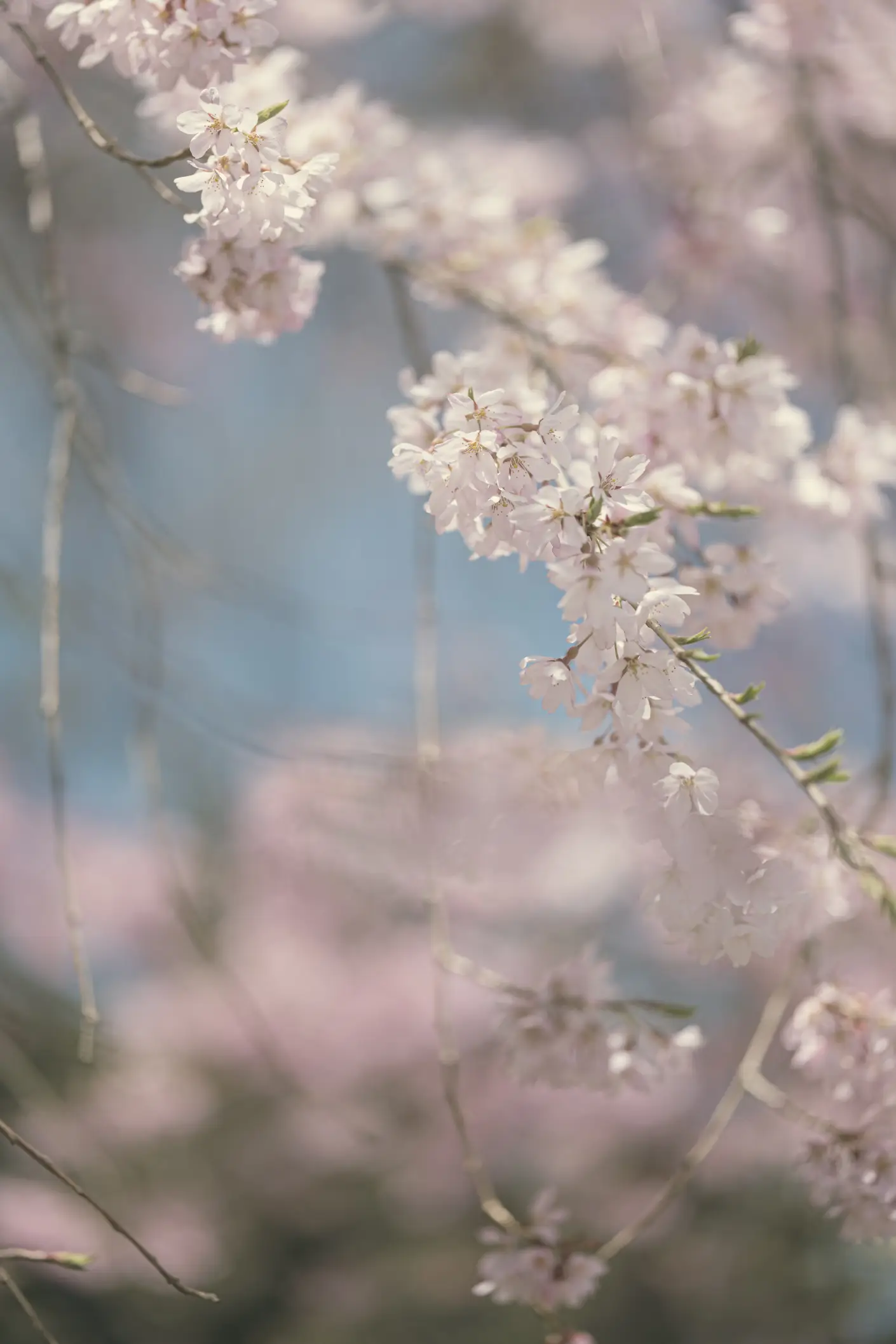
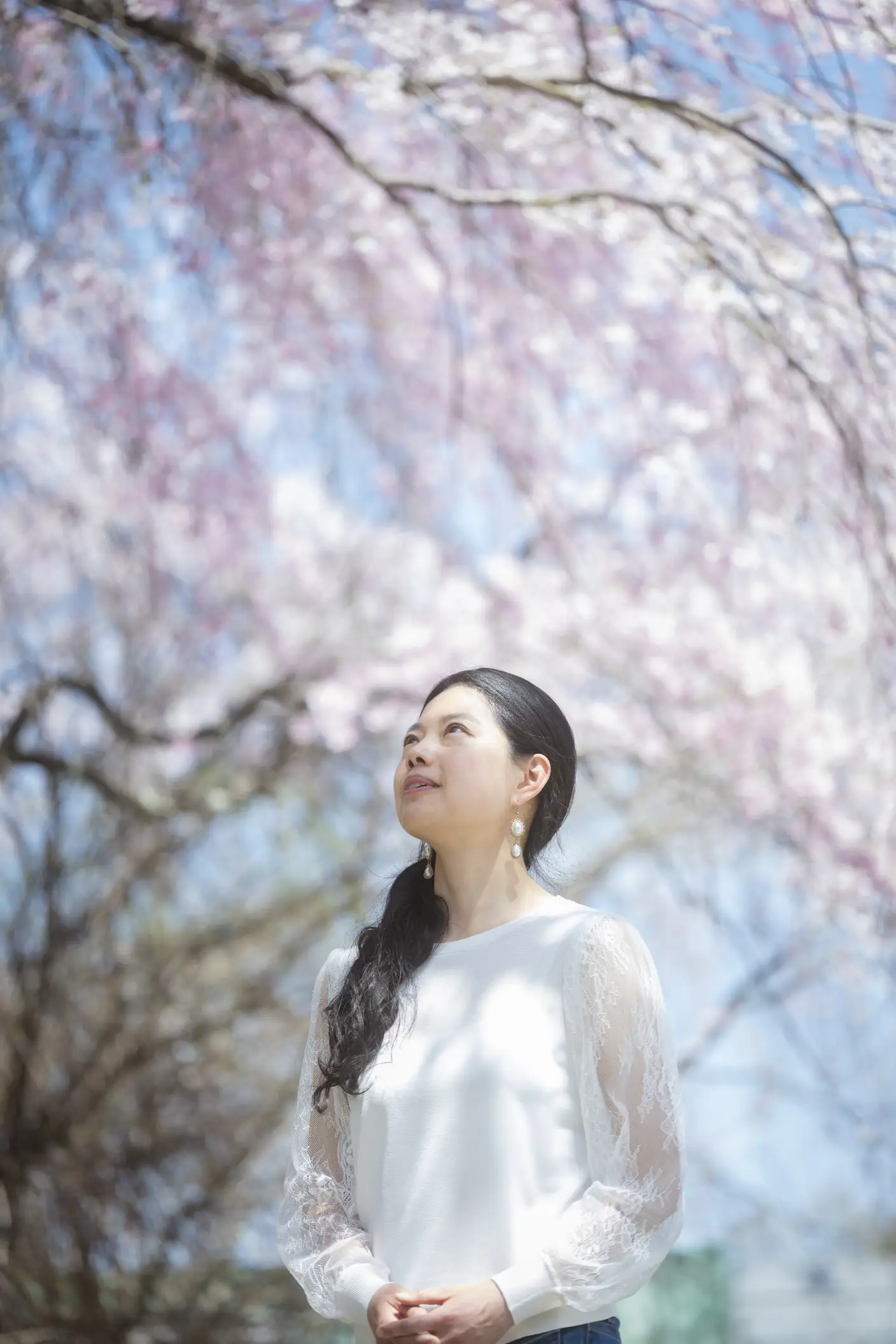
Restoring the Balance
Several years later when I was working at Harvard Business School (HBS), the idea came to me that I might be able to return to ikebana again. Having gone through some life challenges and personal crises, I felt ready to listen to my inner voice that was telling me I would need ikebana in my life. I was able to accept the truth that I was not just escaping from ikebana but also from myself.
I humbly went back to my ikebana class and restarted a once-a-week ikebana practice. I still found it frustrating when having difficulty listening to the voice of flowers. But this time I was aware that it was my ego that was getting in the way by telling me I could do better.
With this new awareness to guide me, the moments became more frequent where I could move deep into the process of letting each flower live, which resulted in something truly beautiful emerging in front of me. My ego would grow quiet and the boundary between myself, the flowers and the act of creation would dissolve.
There was a flow, balance, and harmony in the work, and I knew I did not have to add or subtract anything. It was as if I was creating something without even thinking I was creating. It was the journey of restoring the balance between my body and mind.
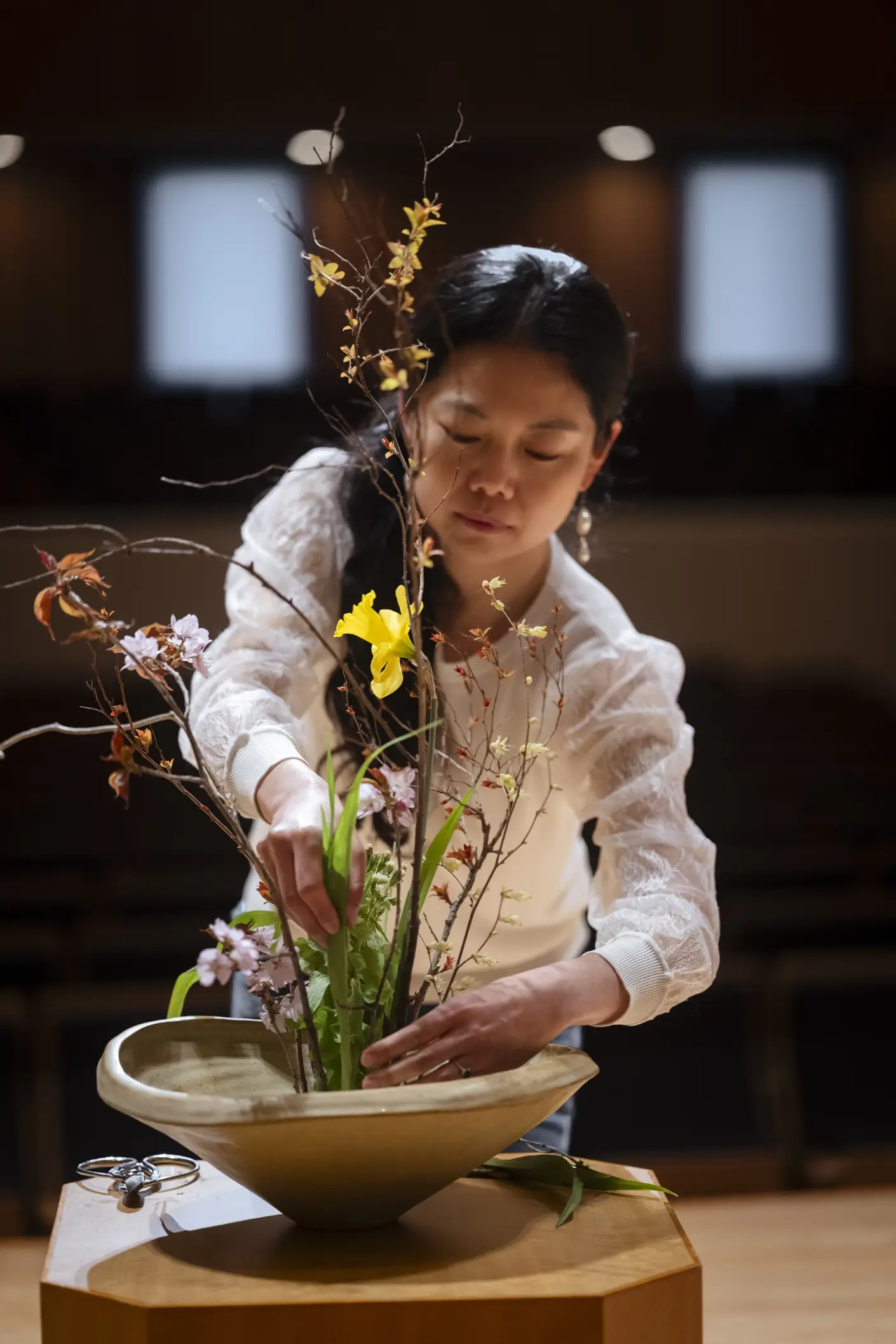
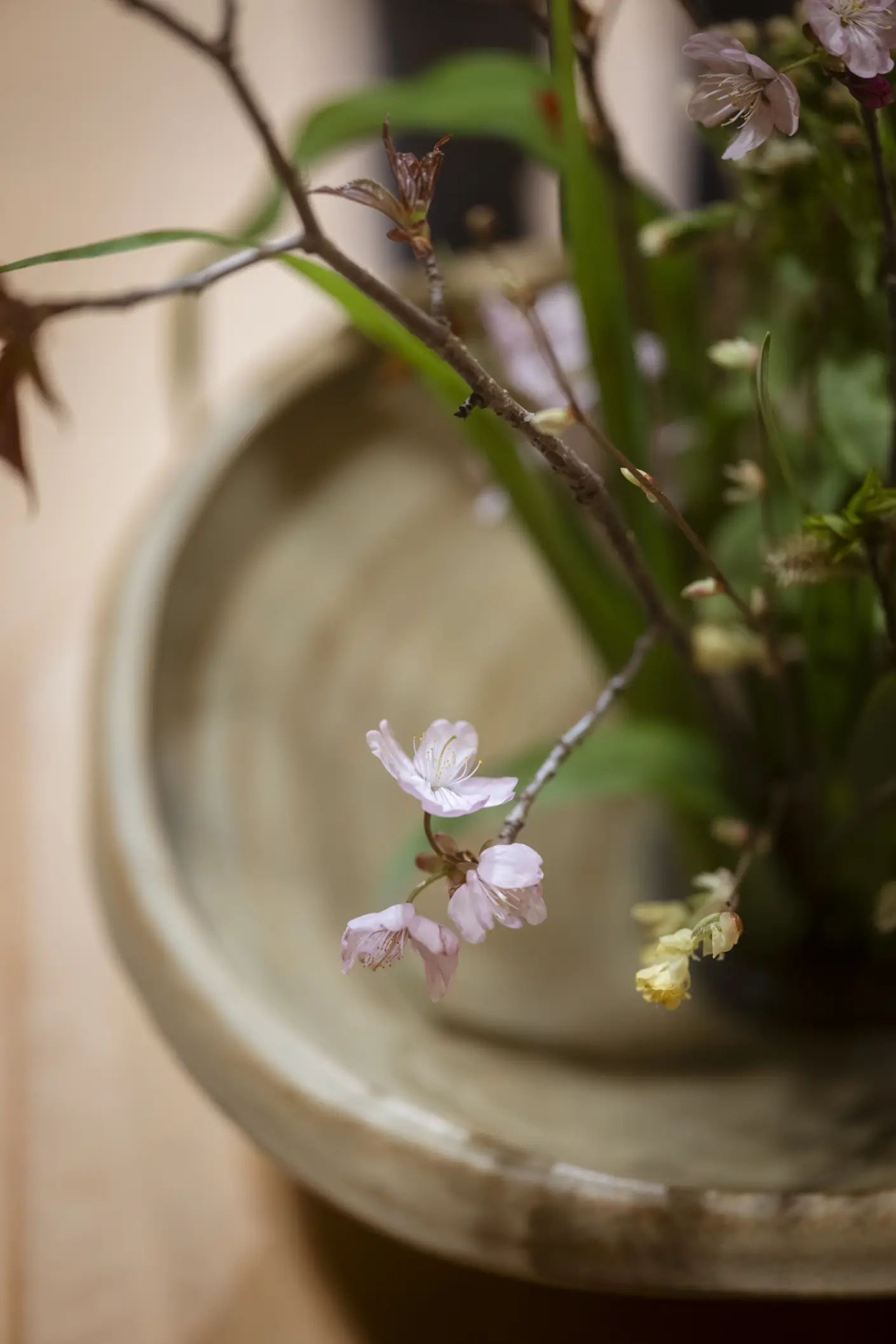
Business Mirroring Life
It was also then that HBS was going through a deep self-reflection after the Great Recession. The school, whose mission was to “educate leaders who make a difference in the world”, came up with a new guiding principle, “Knowing, Doing, Being”. It revised its entire two-year MBA curriculum based on that code.
The school acknowledged that up till then it had put too much emphasis on knowing and therefore would need to restore the balance between knowing, doing and being. I was startled, as it was exactly mirroring what I was trying to do in my own life through re-connecting with ikebana. I could see clearly that the world of business and management was paying more and more attention to people’s inner world.
Mindfulness, the ability to be fully present in the moment, became a popular research topic in the management studies as research started to suggest that mindfulness might be a path to higher productivity, creativity, and leadership effectiveness.
The importance of emotional intelligence, defined as the ability to understand and manage your emotions, as well as recognize and influence the emotions of those around you, was widely recognized particularly for business leaders.
Seeing this unfold around me and being mirrored in my own life, I started to wonder whether my mission on this earth might be to bridge the worlds of ikebana and business, as a person who knew both worlds. So in 2017, I left HBS and launched IKERU, with a mission to bring the wisdom of ikebana to business and leadership education.
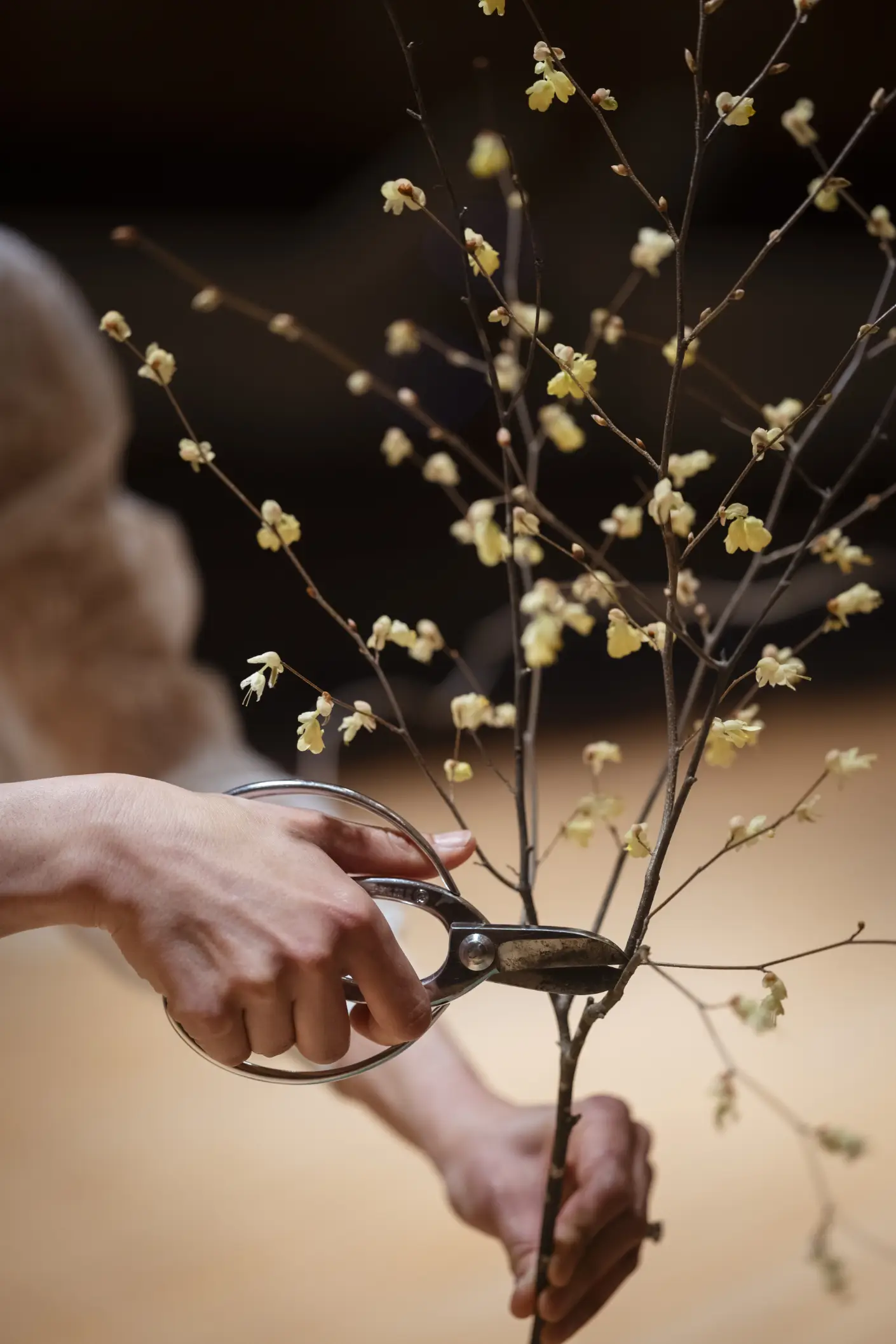
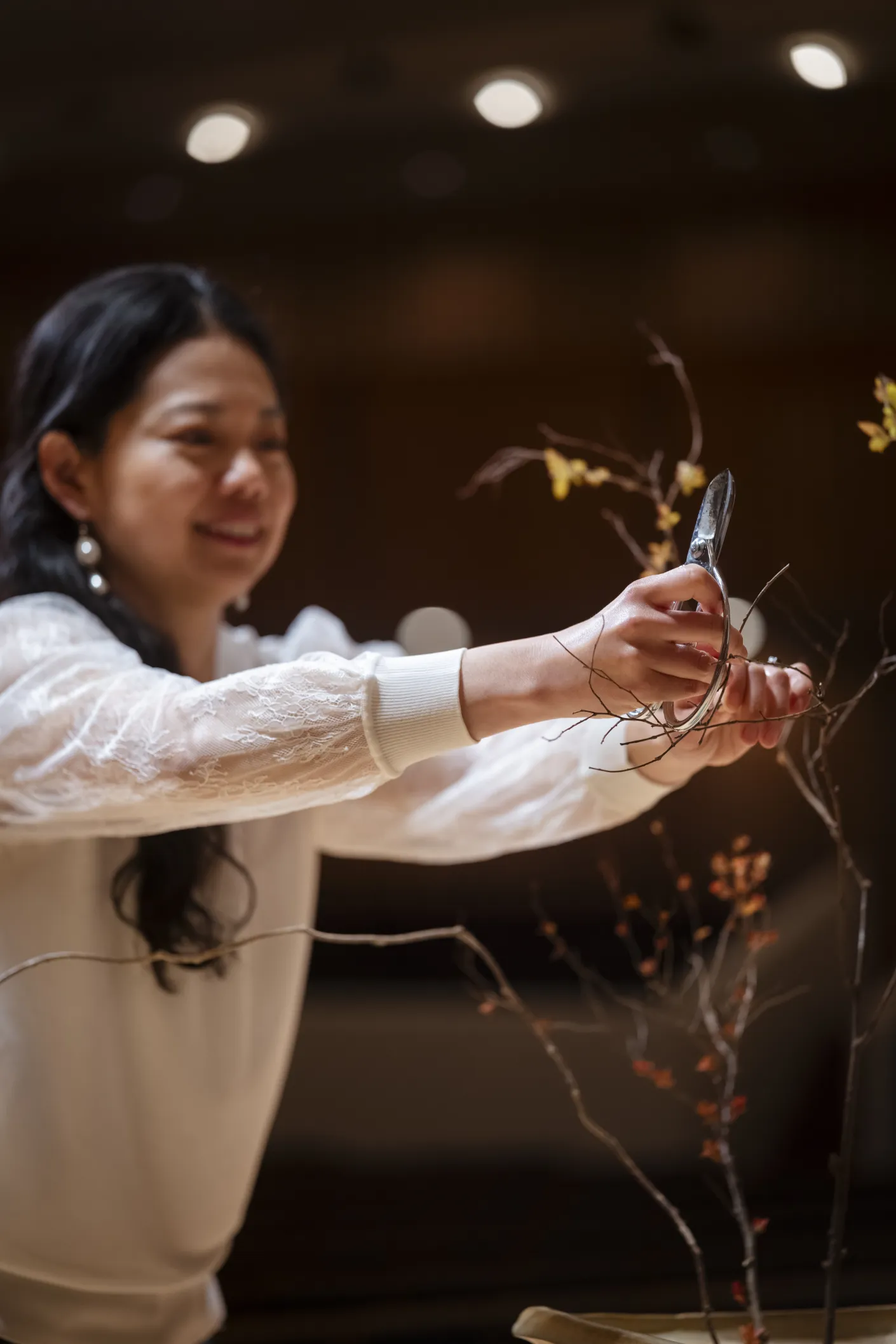
My Body Telling Me No
Slowly but steadily, the number of people who would come to enjoy the IKERU experience of letting flowers live increased. They included young professionals, artists, entrepreneurs, and college students.
I also started to receive inquiries from companies and international organizations to offer IKERU workshops for team building and leadership development. Lectures, speeches, and media appearances followed. It seemed that IKERU was successfully taking off. I was convinced that I had found the meaning of my life.
But then I got seriously ill.
I had been so into my vision of spreading the wisdom of ikebana to as many people as possible, that I had used and overextended my body to realize the vision my head had painted. Even though I was telling people at IKERU workshops about the importance of restoring the balance of body and mind, I was still very much living my life dragged by my head.
The illness was the consequence. My body’s way of telling me no.
I had to put my IKERU activities on hold for medical treatment. I was devastated. I had found my purpose and meaning in life, which was to bring the wisdom of ikebana, the Japanese tradition, to the world of global business, but I had to give it up at least for a while.
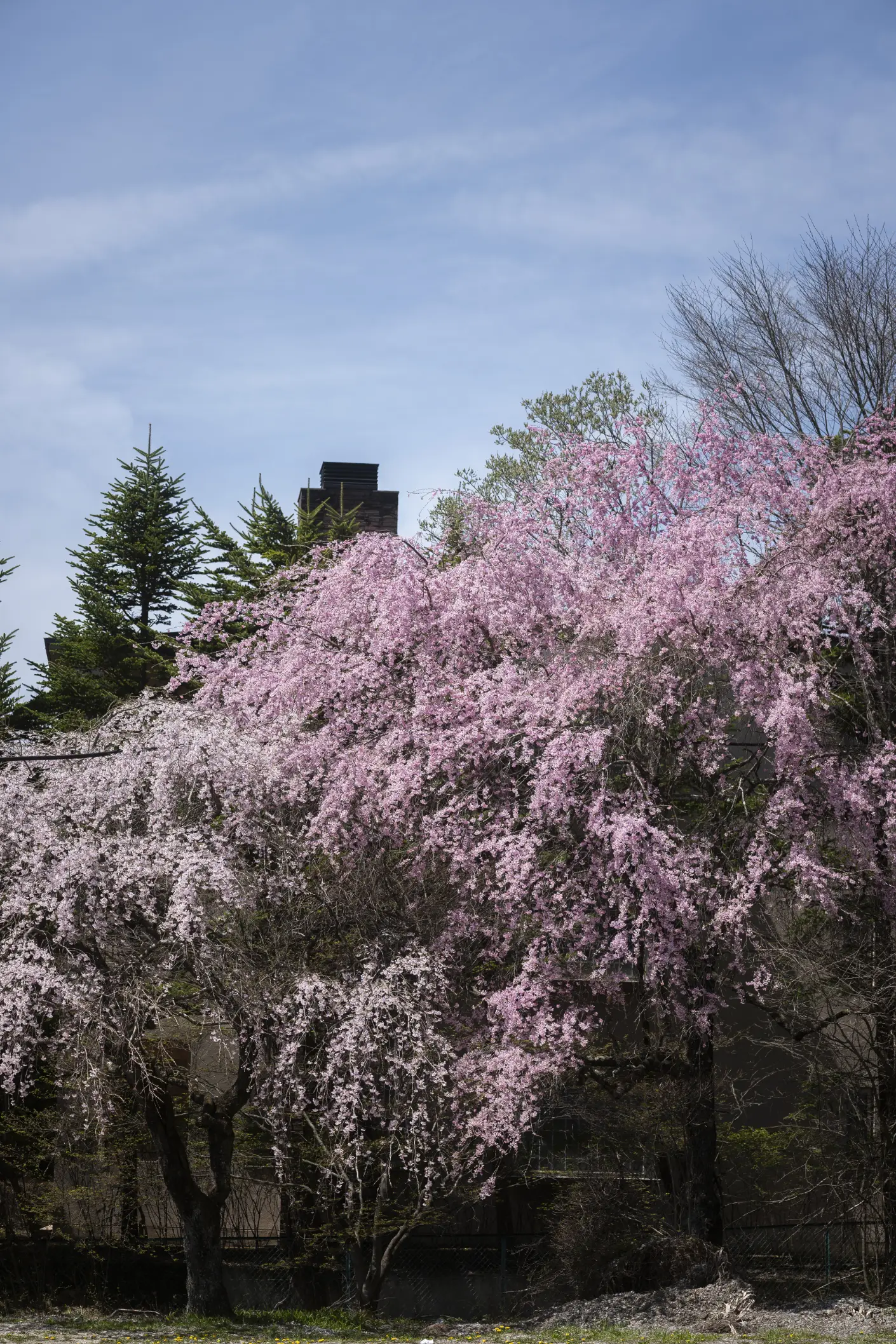
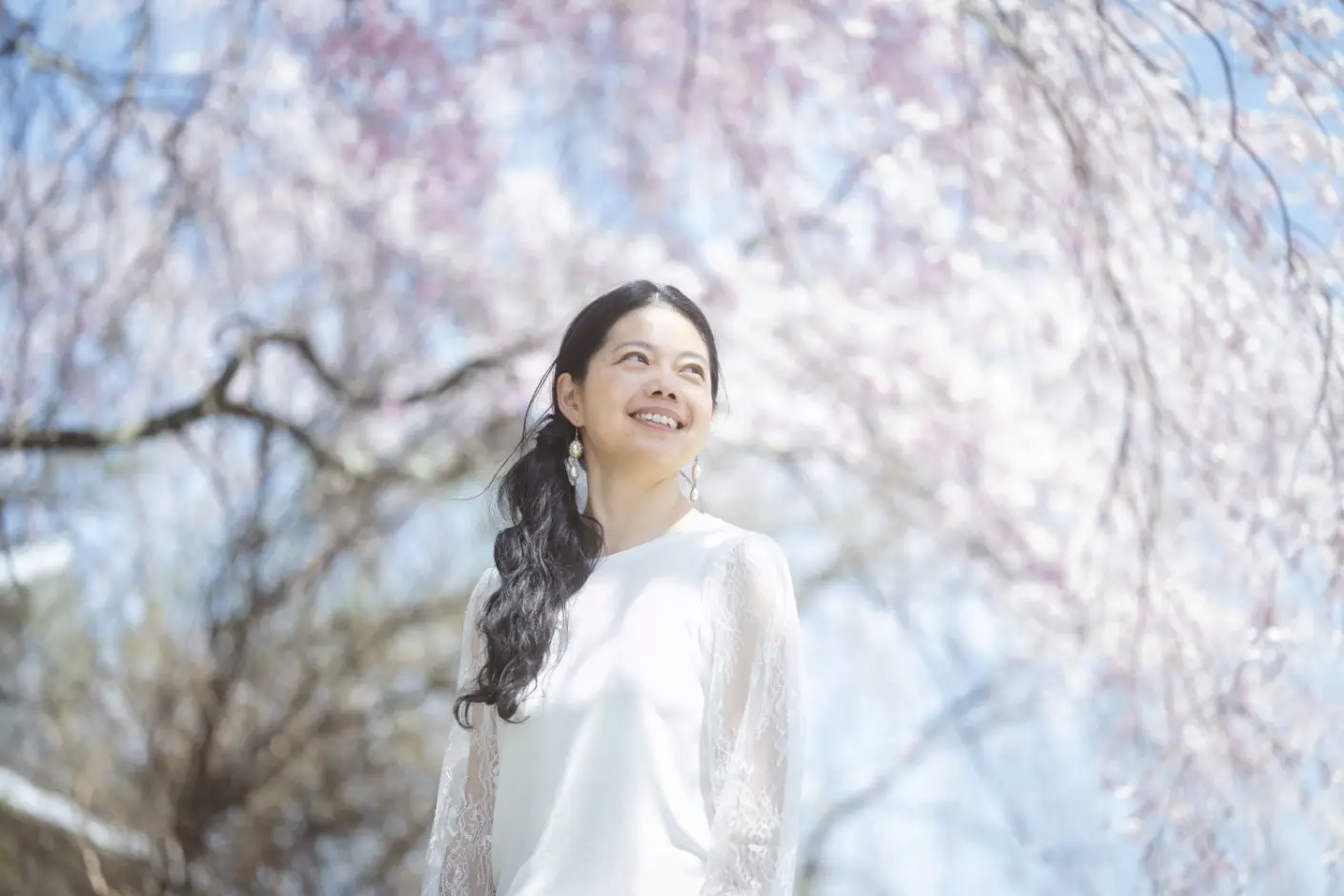
The Healing Power of Nature
Shortly after, the Covid-19 pandemic started, and the entire world was put on hold. It coincided with a time when we moved from Tokyo to Karuizawa, a small town in the mountains. The world literally got quiet.
In that tranquility, my feelings of devastation and frustration began to fade. I noticed the wonder of nature around me and enjoyed just walking and meeting wildflowers, plants, and mushrooms. I started to do ikebana of wildflowers, plants and branches that were abundant in my neighborhood.
To let wildflowers live, I noticed that I would need to get myself really attuned to the voice of the flowers, otherwise I could not let them live. Unlike flowers that are traded in the market and grown in a way to please people, wildflowers are just the way they are for their own survival. I need to be in the present with my whole body and mind to really listen to the voice of the wildflowers.
In the long and cold winter in Karuizawa, all plants are dried and brown and faded green of evergreen trees become the only colors we see outside. I have found it so transcending to let these already “dead” flowers live again in the vase. It requires me to get really focused and present, using all my senses to hear the faint voices of these dried flowers.
Thanks to the power of nature and those wildflowers, I gradually restored my balance.
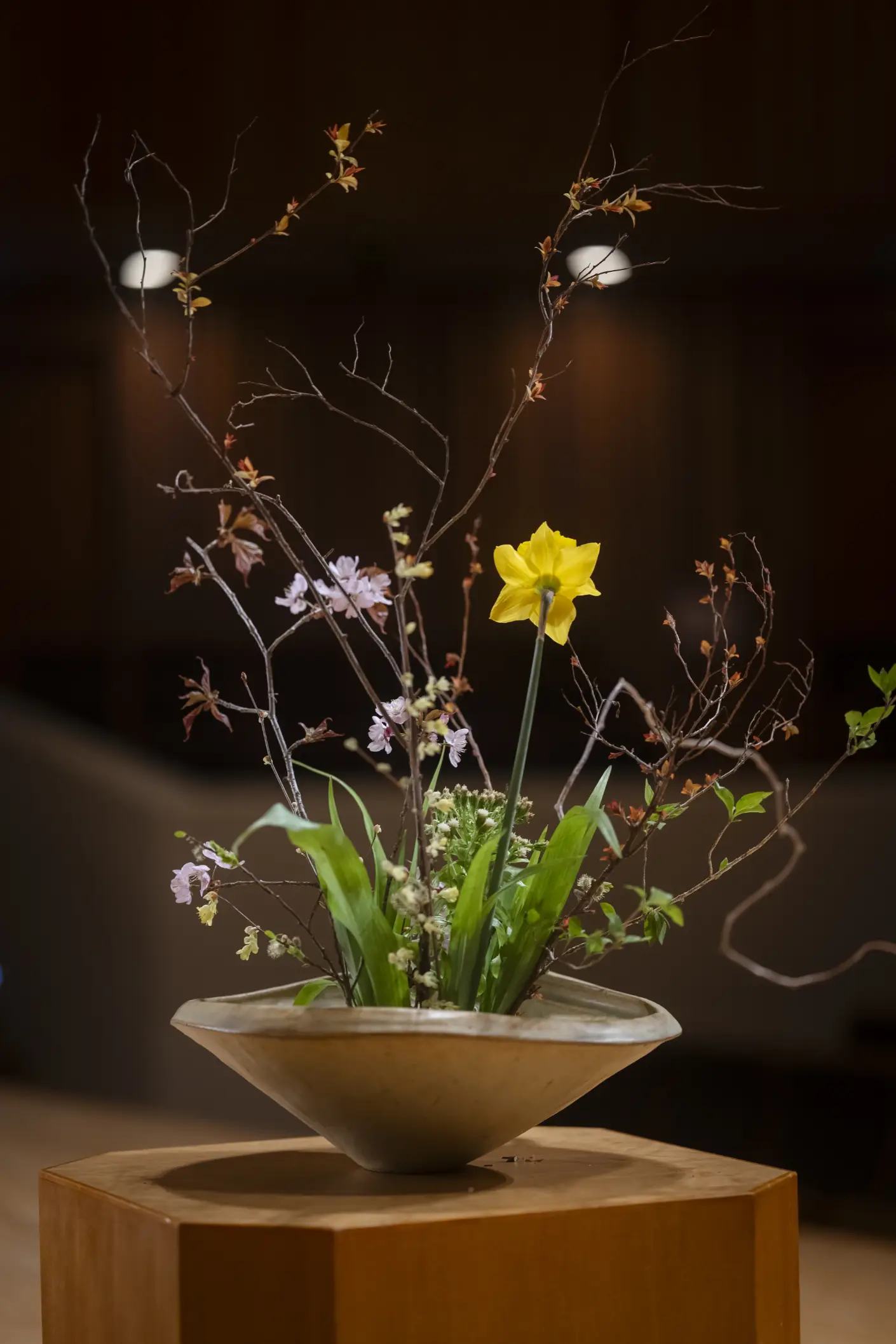
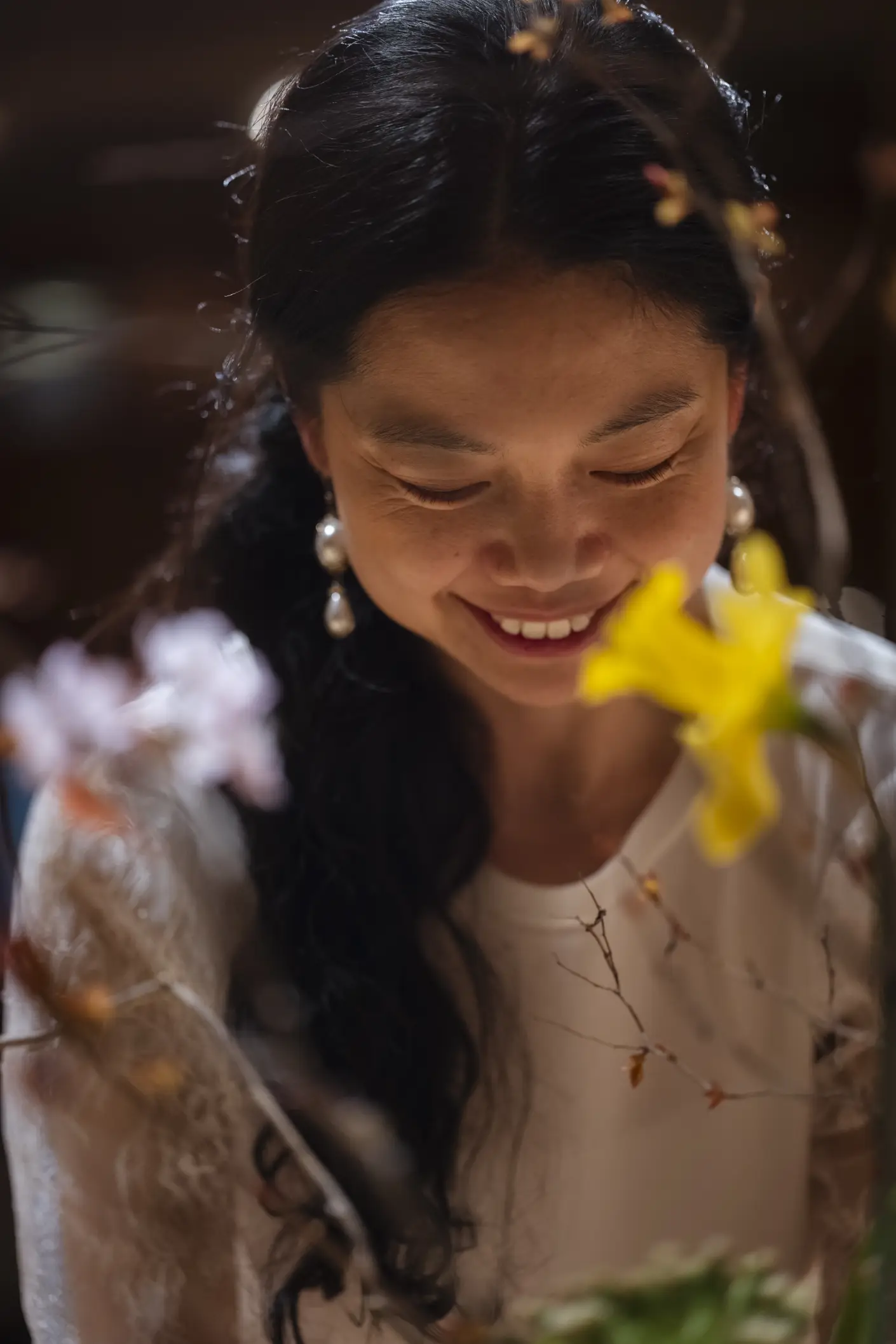
Living Life Fully
As the pandemic was on a downward trend and in-person meetings and workshops were back in business, I restarted my IKERU activities after a few years of pause.
But something had shifted inside of me. Now, rather than trying to become a missionary to spread the wisdom of ikebana, at every lesson, workshop, and lecture, I just try to be in the moment as I am, like when I try to let each flower live when doing ikebana.
Through the lessons and workshops I witness the regular participants deepen their capacity to stay in the moment, and enjoy the process itself, without being distracted by the prospect of the end result. As well as grow their capacity to see beauty and uniqueness in everything.
This often results in a deeper belief in themselves, the people around them and the world at large. Which in turn makes it easier for them to return to that experience when they sometimes get stuck in seeking something better or larger in the future outside of themselves, getting frustrated between their “real” and “ideal” state. Like we all do.
Having the embodied practice of ikebana allows them (and me) to return to the way things are and work from there in a more emergent, creative and compassionate way.
When I am at home in Karuizawa, I walk or run in my beautiful neighborhood almost everyday, meeting wildflowers, and noticing small changes in seasons, and do ikebana with flowers from nature.
For the first time in my life, I have a sense that I am deeply enjoying myself. While my body still has medical issues from the illness, I feel I am living my life fully as well as being lived by something larger.
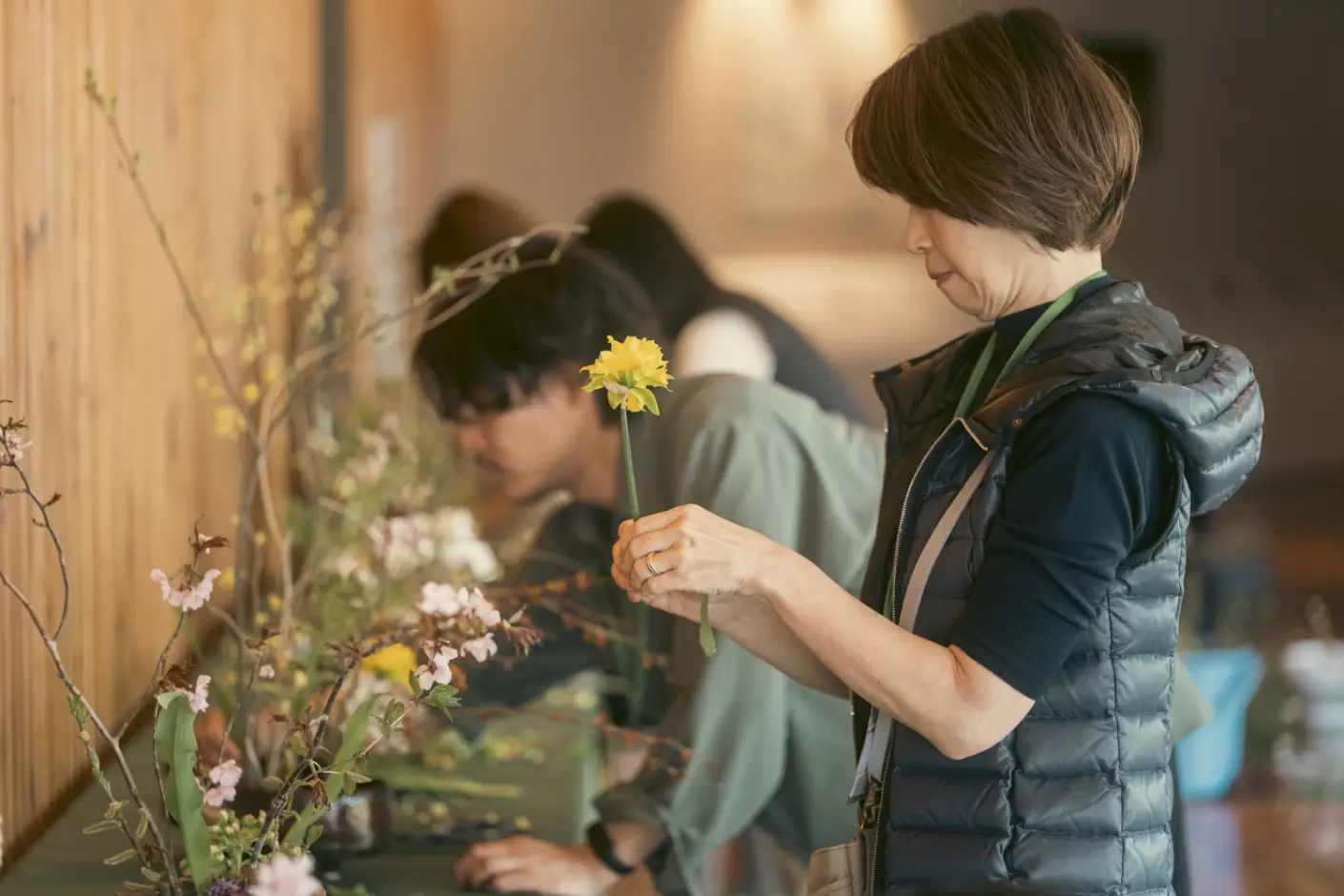
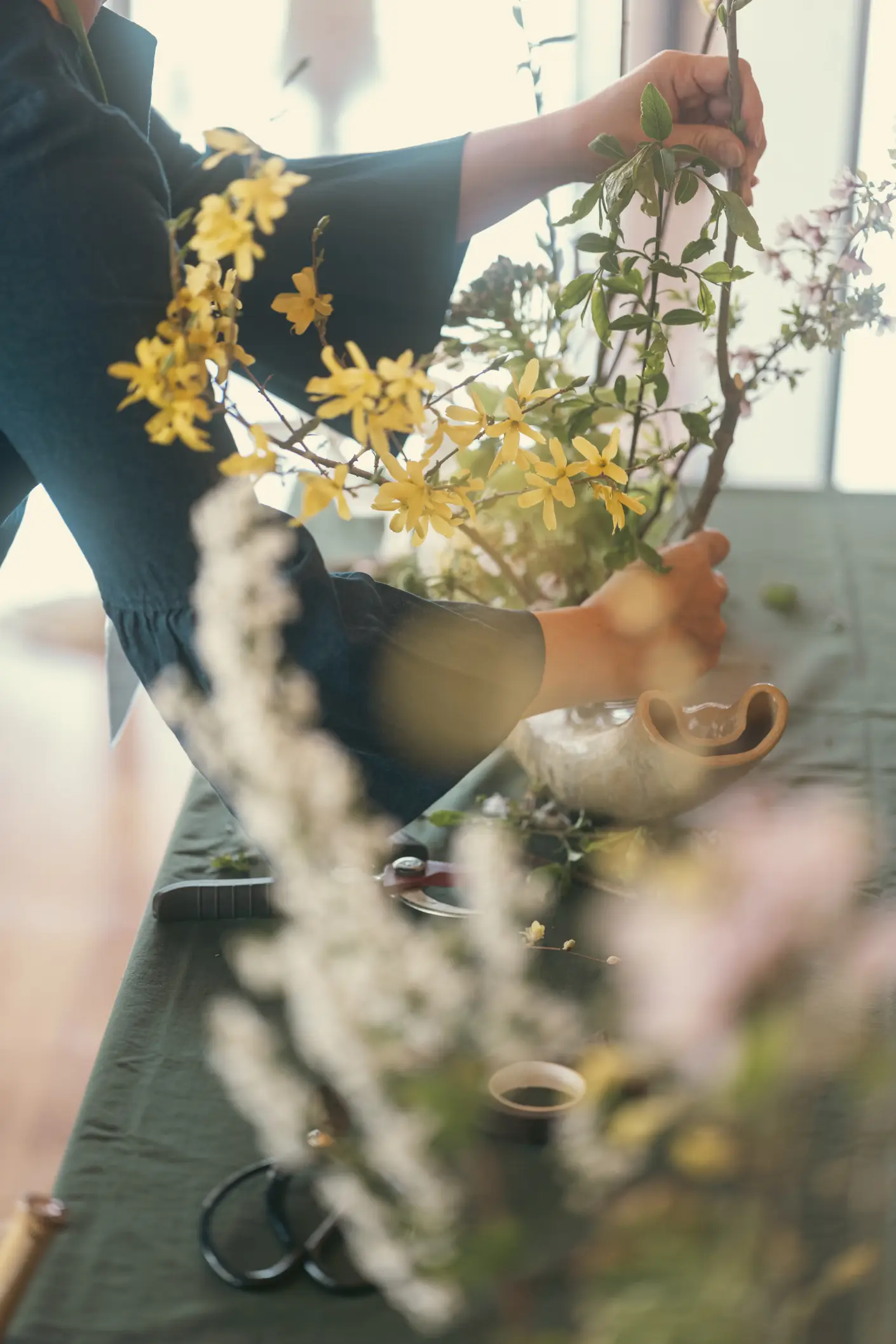
Restoring Our Sense of Wonder
While growing up in central Tokyo most of the time, I spent my early childhood living in a local city where forests and rice paddies still existed when I was six years old. I still have vivid memories of living there. I particularly remember the joy I found in weaving a wreath of flowers I collected in a nearby rice paddy, and in creating a book of pressed flowers and leaves that I also collected in my neighborhood. I sometimes placed flowers in a small glass and put it on the table.
I feel like I have been returning to the six-year-old girl who just enjoyed playing with flowers in nature. And the more I return to her, the more joy and tranquility I find when doing ikebana, and I can see there is more harmony and rhythm in every ikebana work that I create.
With its long history, many theories, methods, and definitions of ikebana have been developed. But probably, ikebana is just simply teaching us how to reconnect with nature and restore the sense of wonder we all had when we were children.
I now see that the essential nature of ikebana is to be a part of something larger, such as nature and the universe. I believe this is at the core of any religious tradition including Buddhism and Shinto. When we truly listen to the voice of flowers, the boundary between us and flowers is dissolved.
Dissolving this false sense of separation, between humans and nature, private self and professional self, us and them, is one of the key issues of our times. Ikebana is a practical and creative way to work with that, reminding us to see beauty and wholeness in everything.
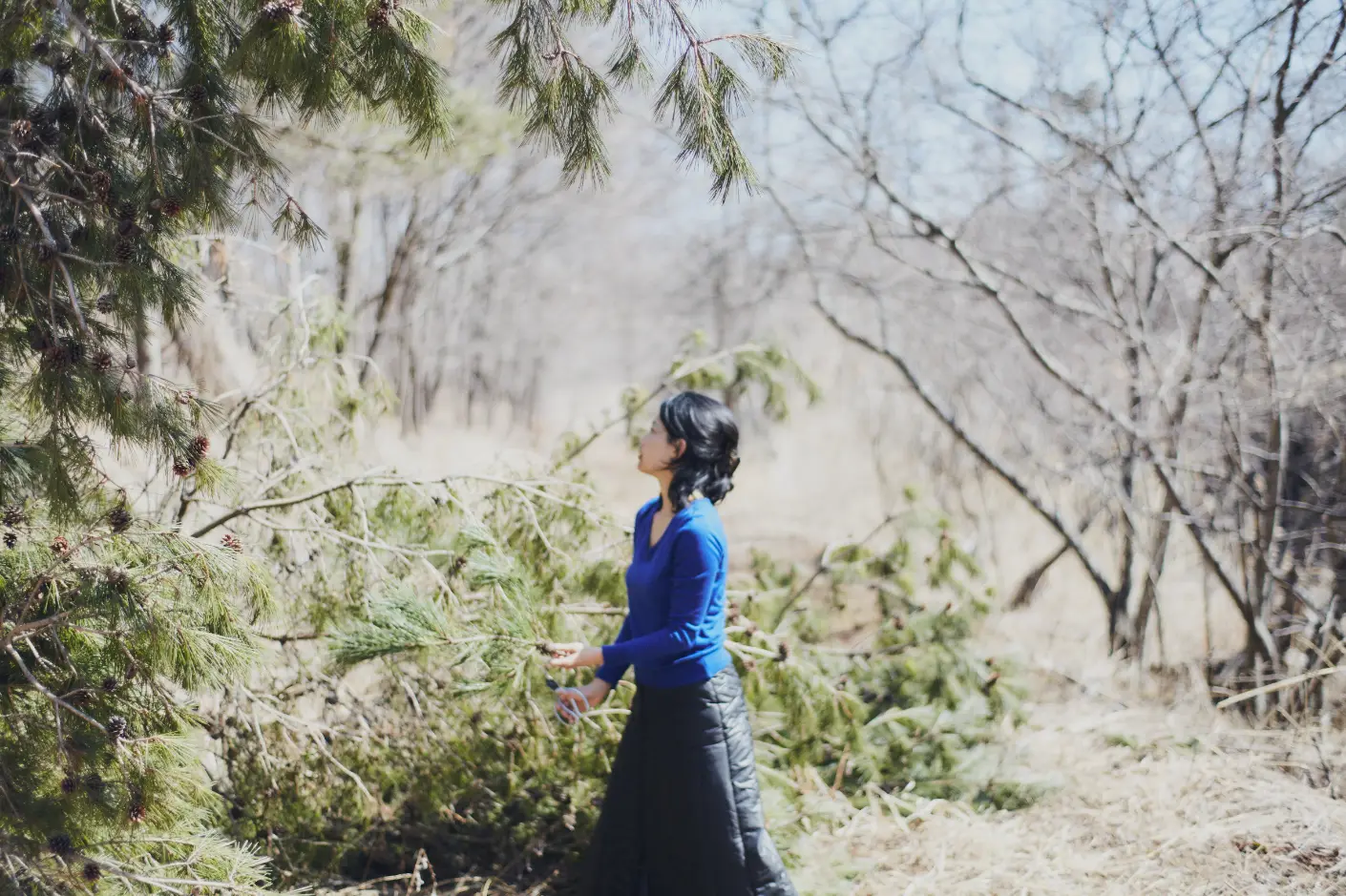
A Simple Practice: Walking to Meet Flowers on the Street
To experiment with some of the above, I’d like to offer you the following exercise.
- Leave your phone at home. Go outside and take a few deep breaths. Then start taking a walk for 15-20 minutes.
- While walking, if there are flowers, plants or trees you feel attracted to (as if your eyes meet theirs) and you feel that it is OK to bring them back home with you, collect them. Be aware of what is surrounding you.
- Once you return home, find something in your house that can be a vase for the flowers you have brought back with you. It can be a small glass, cup, dish, jar, or used pet bottle—anything you think would enjoy playing with your flowers. Pour water into your vase.
- Then, take one flower at a time in your hand. Look at the flower carefully to learn its curve, expression, and flow. Then cut the stem, and place the flower in the vase in a way that makes it look the most beautiful. Do not think too much. Trust your intuition. Just enjoy playing with the flowers.
- Once you think you have finished placing the flowers in the vase, check the balance as a whole.
